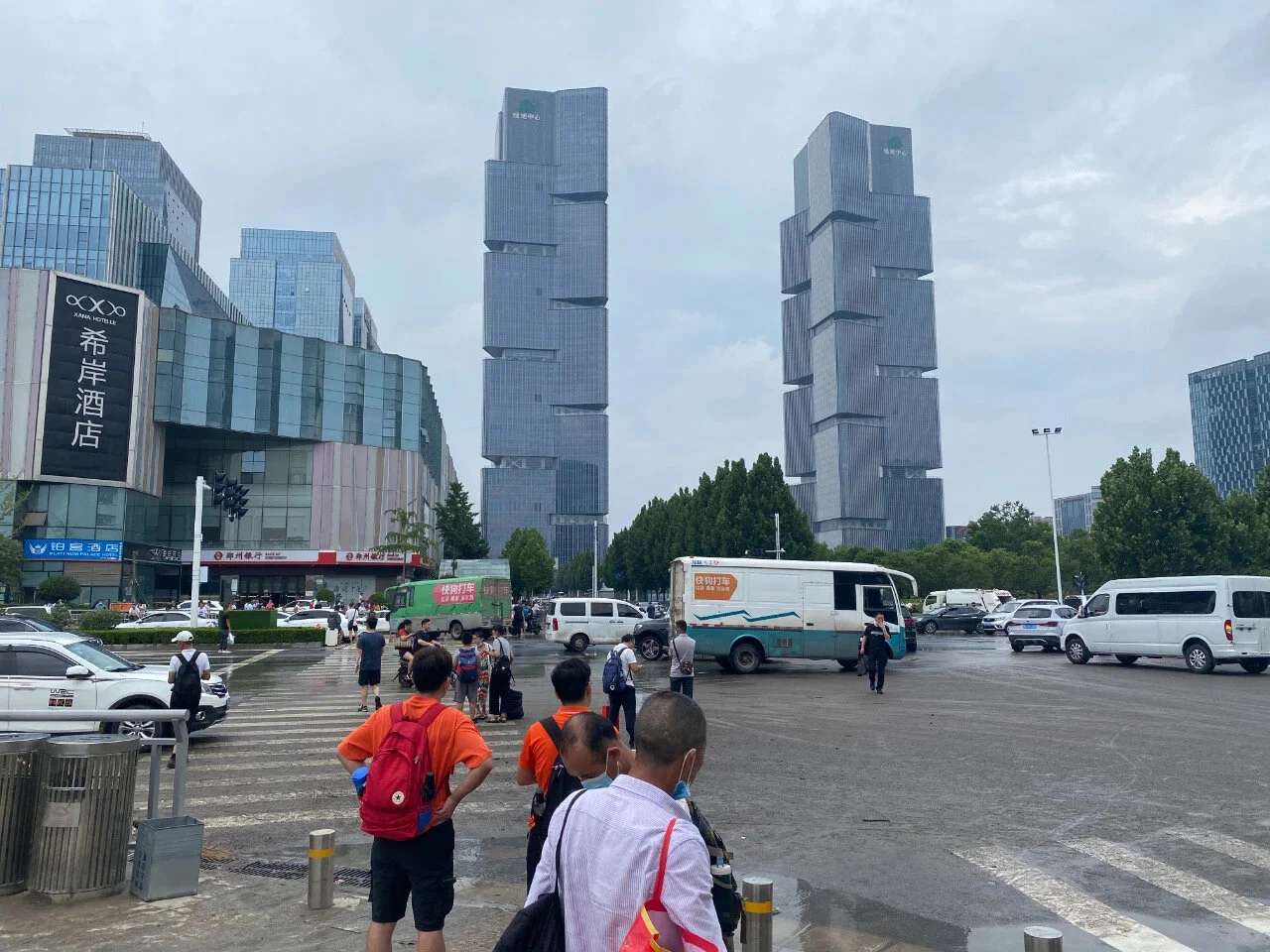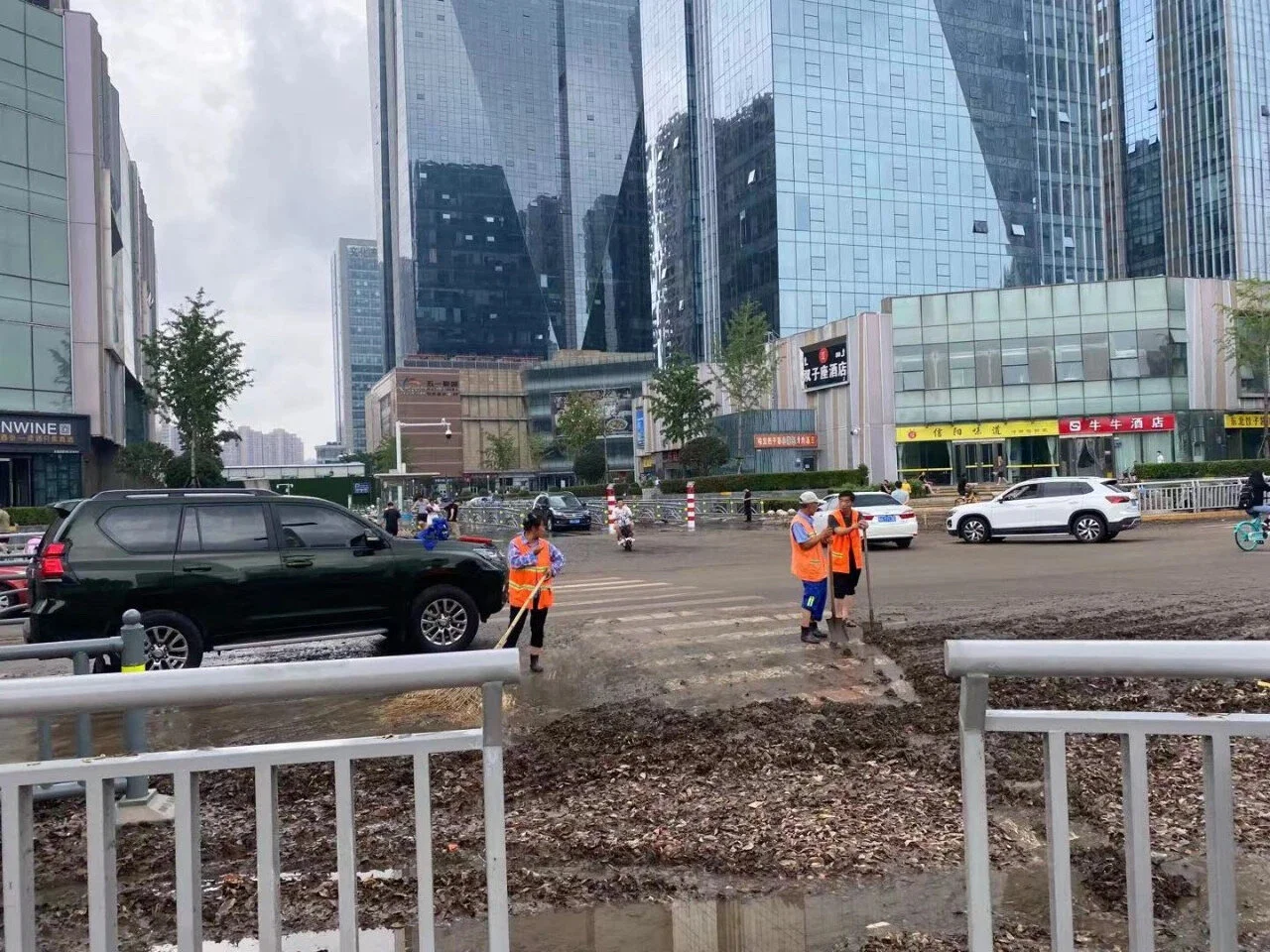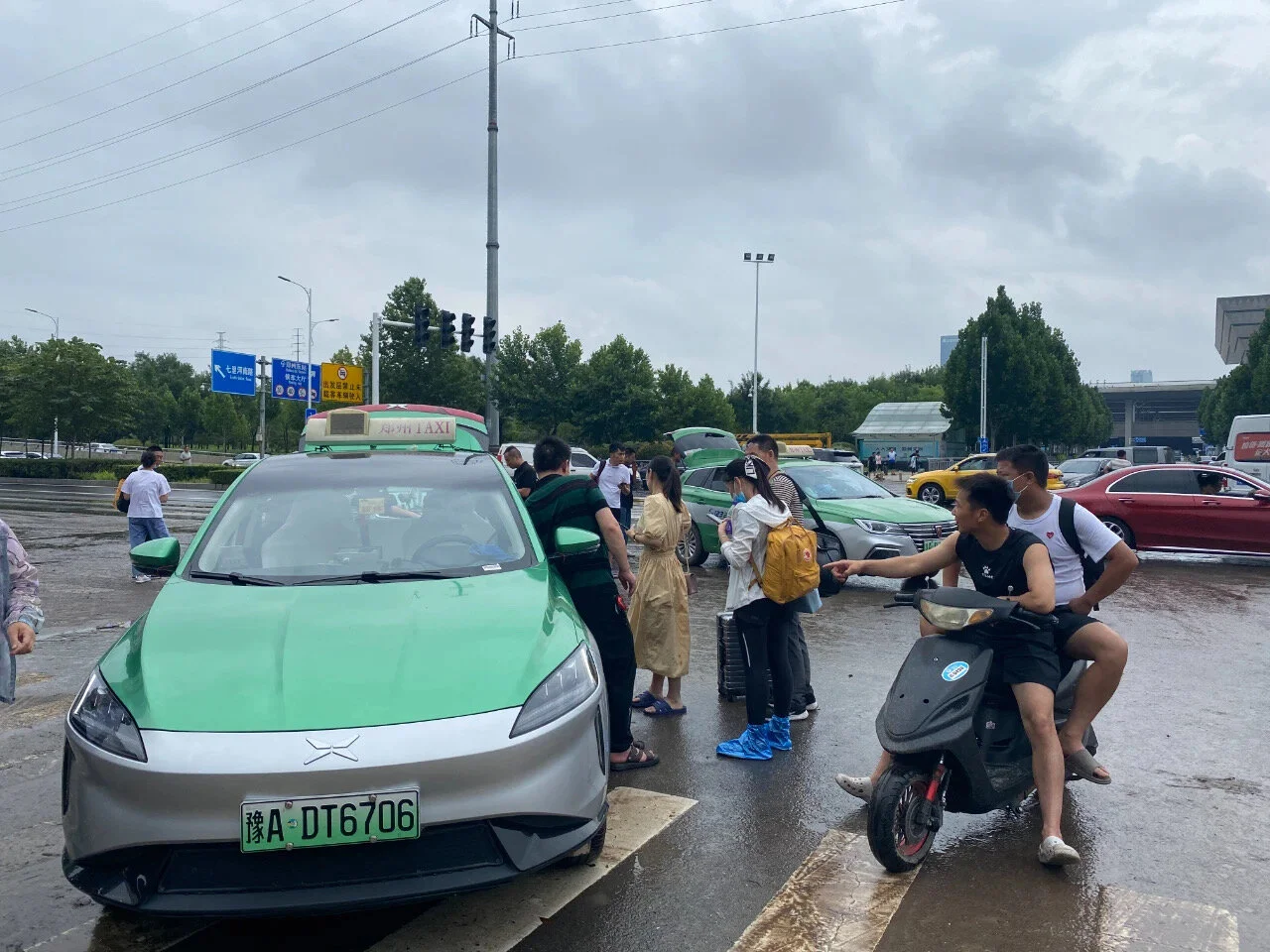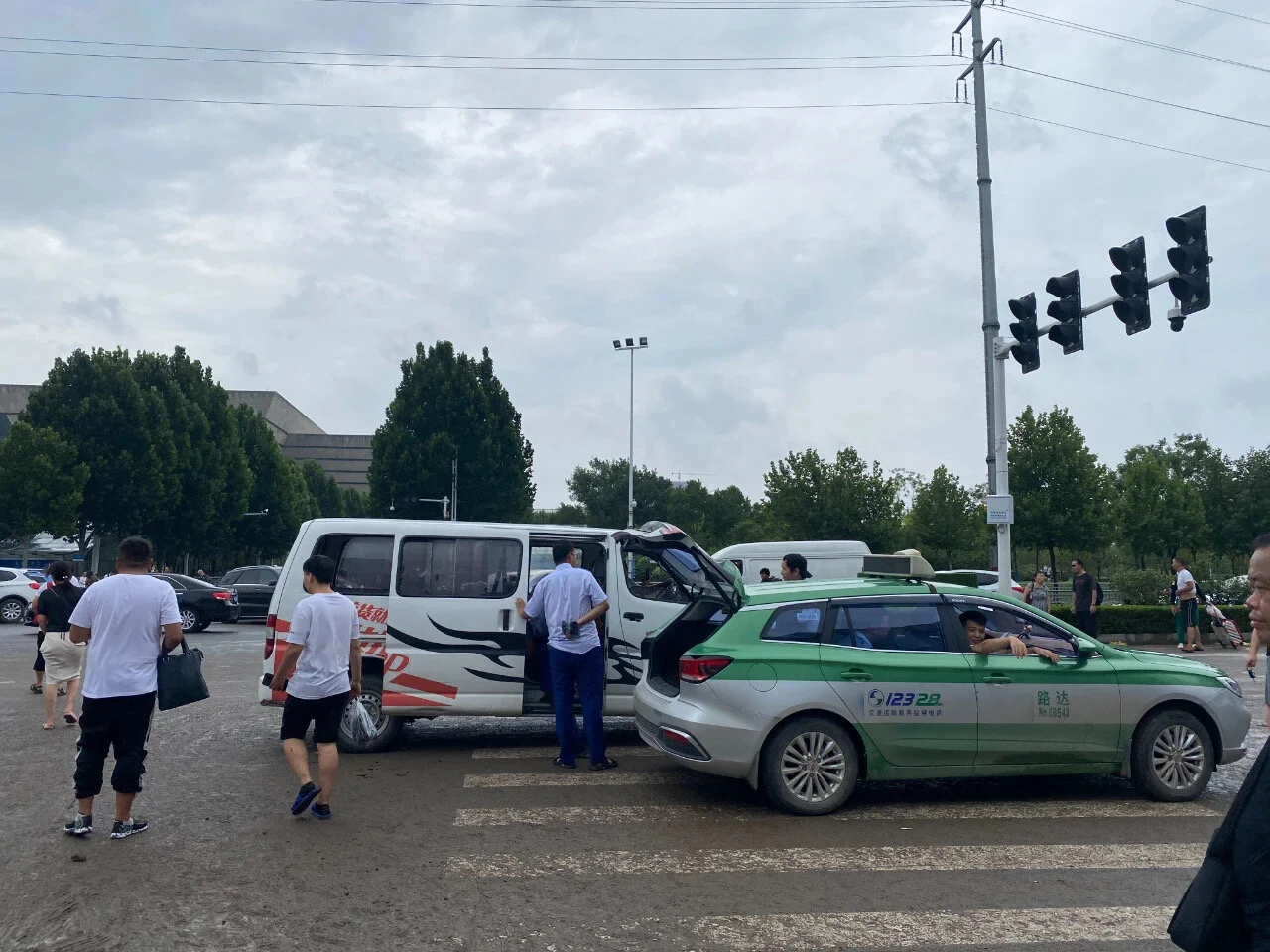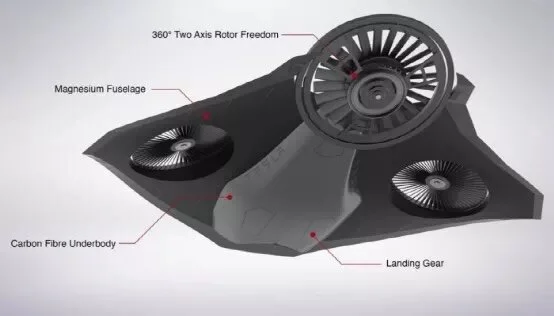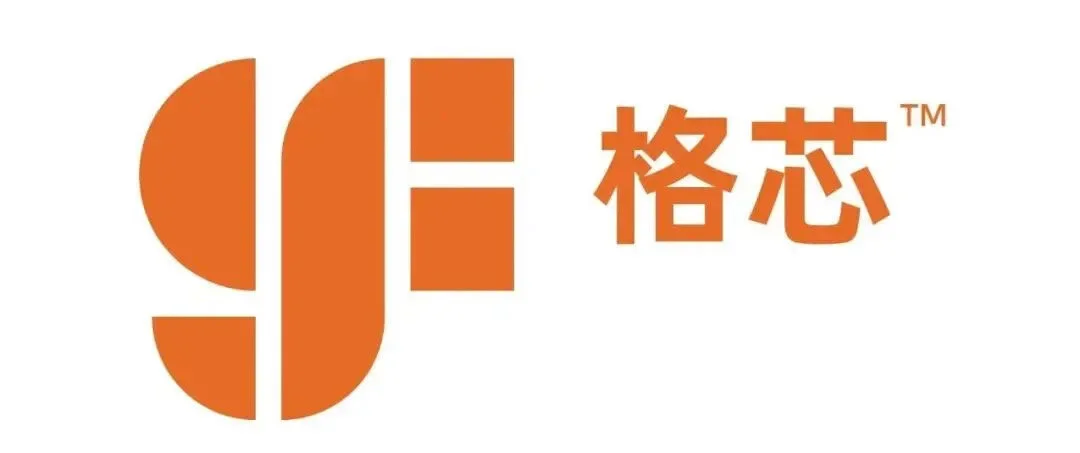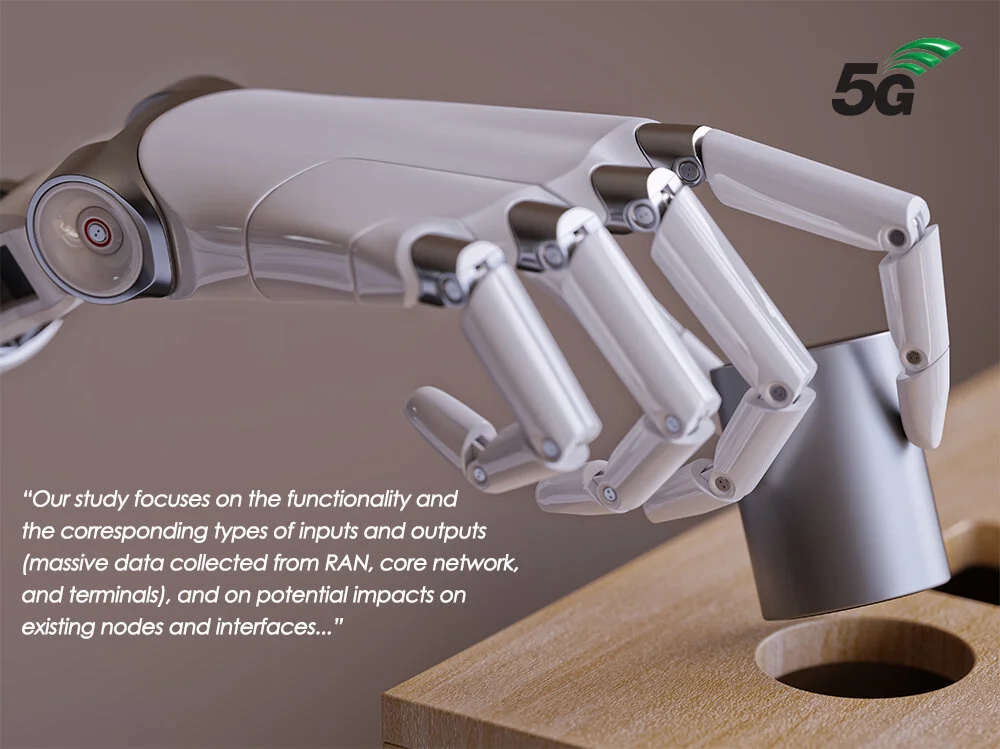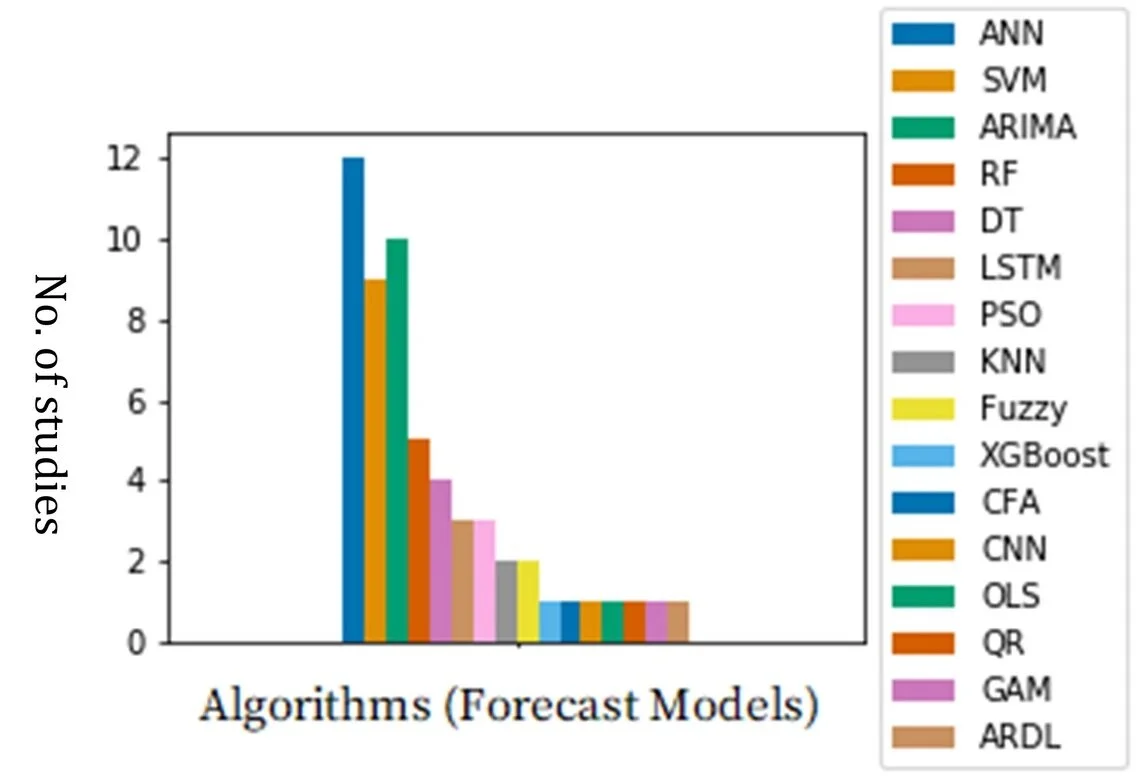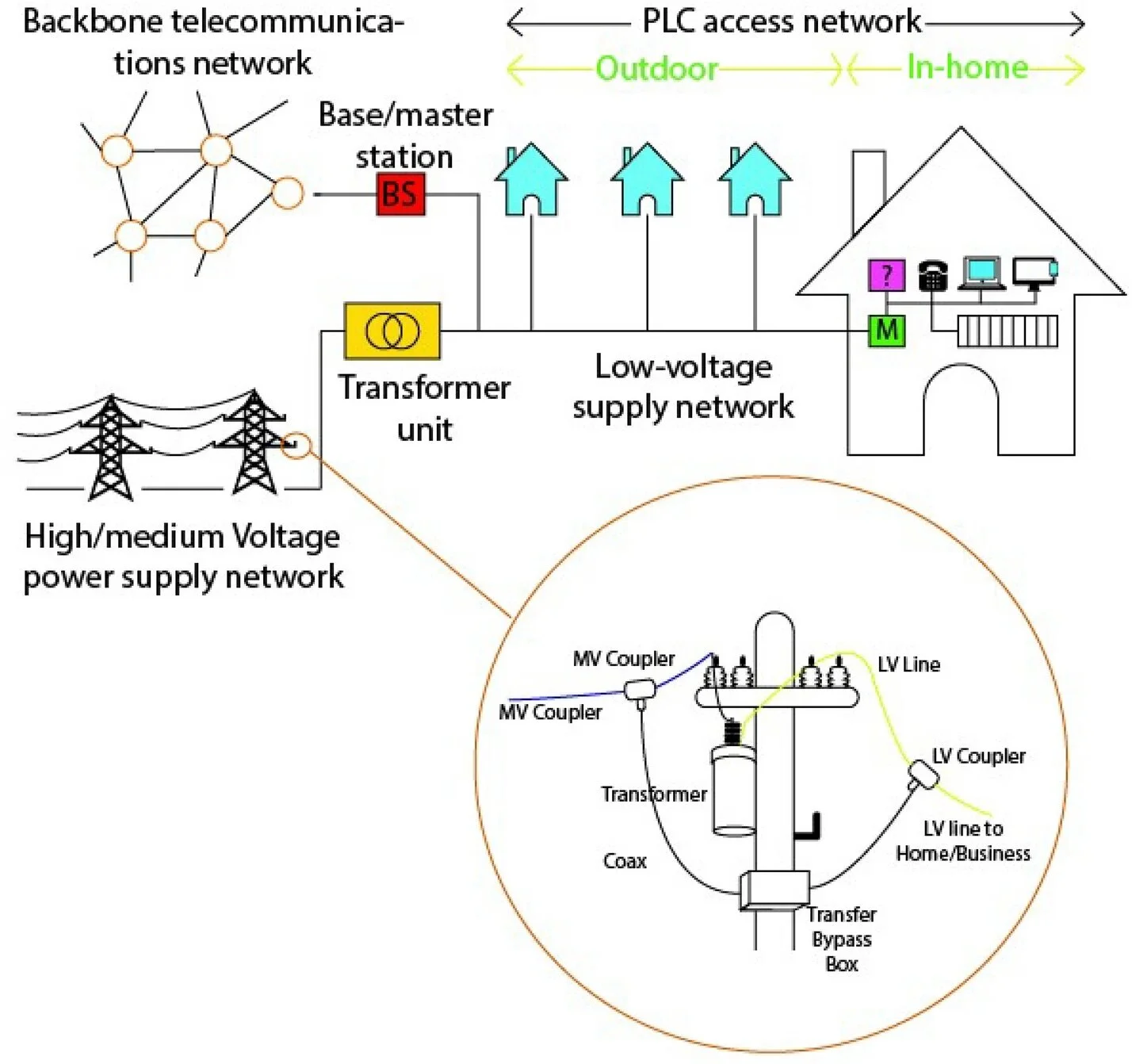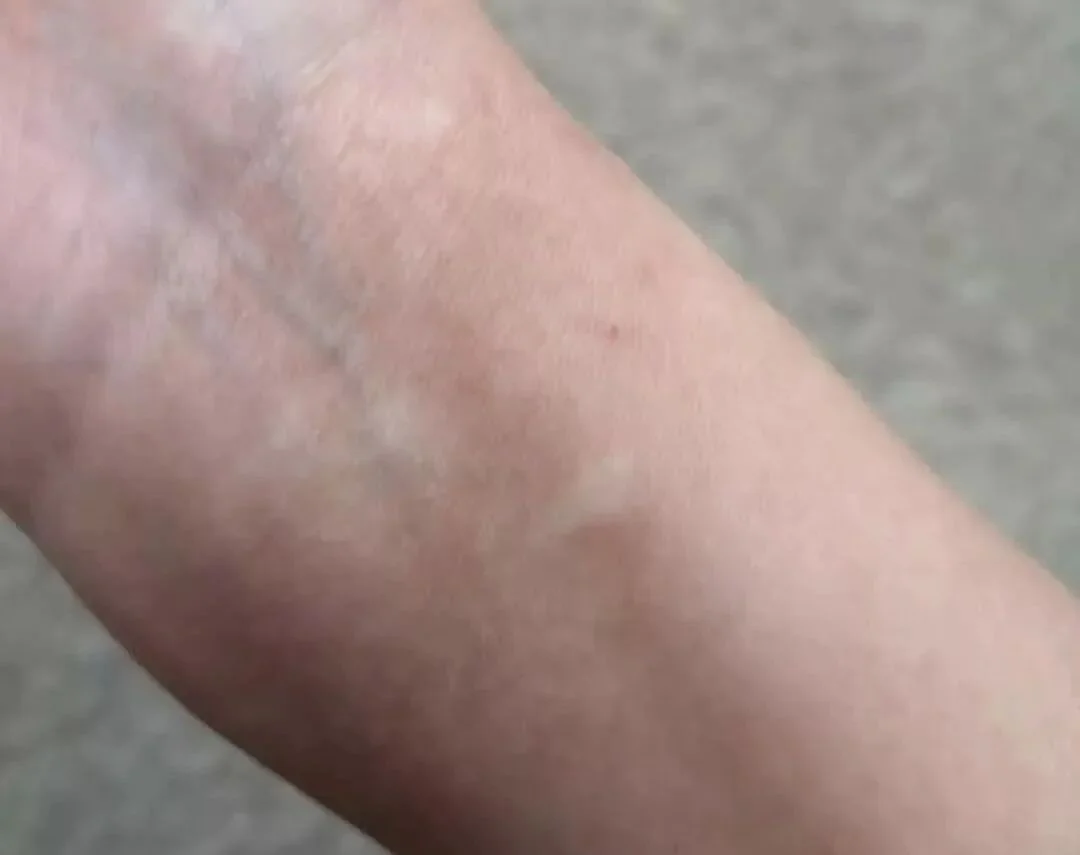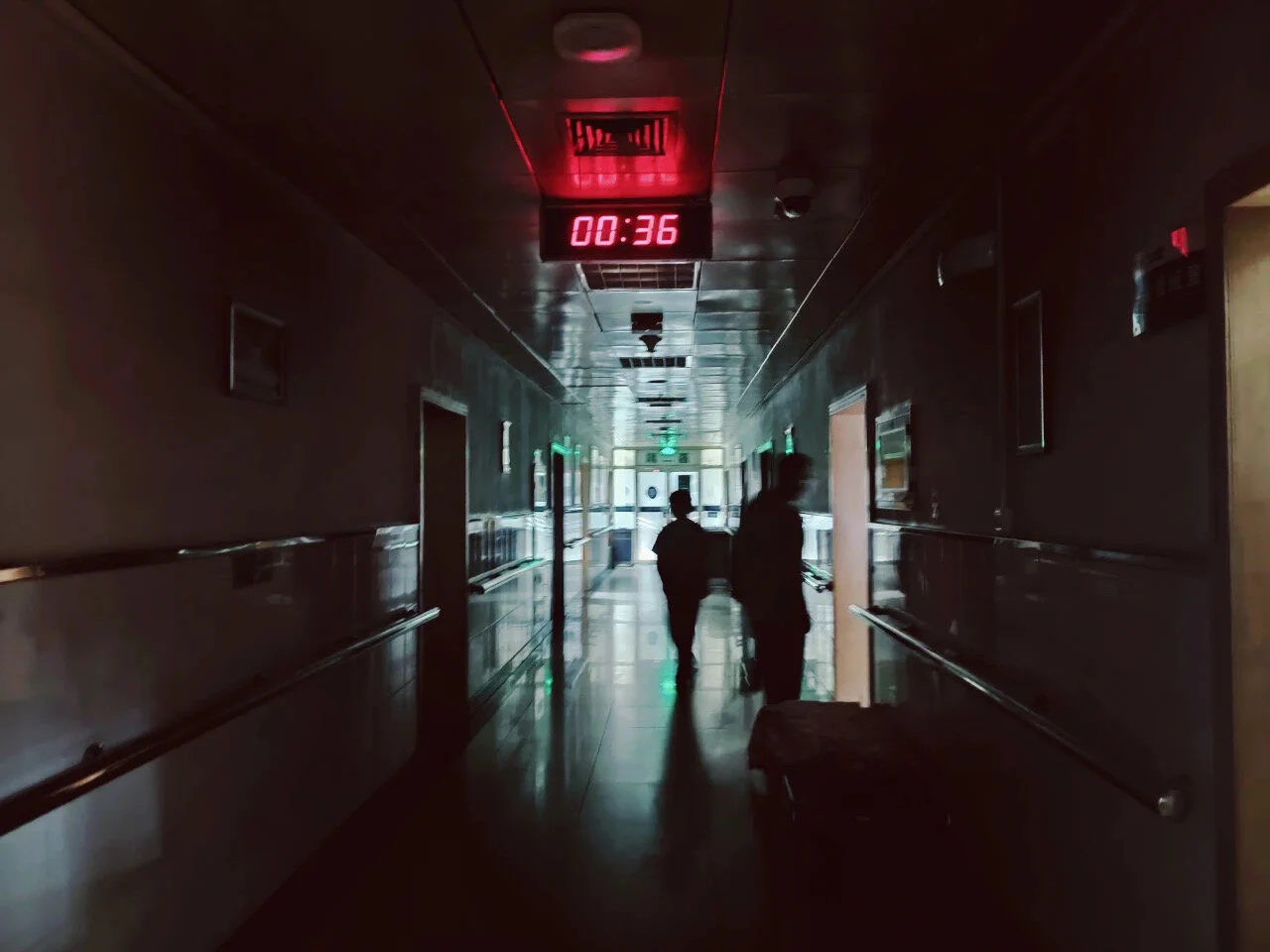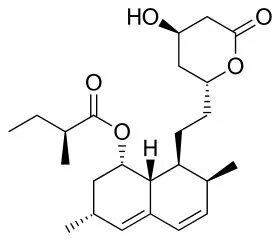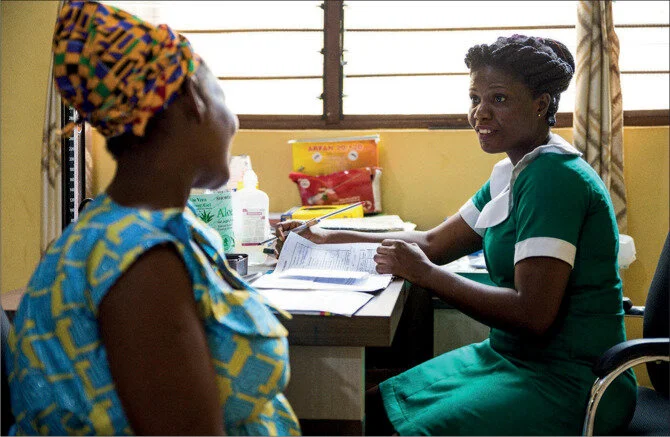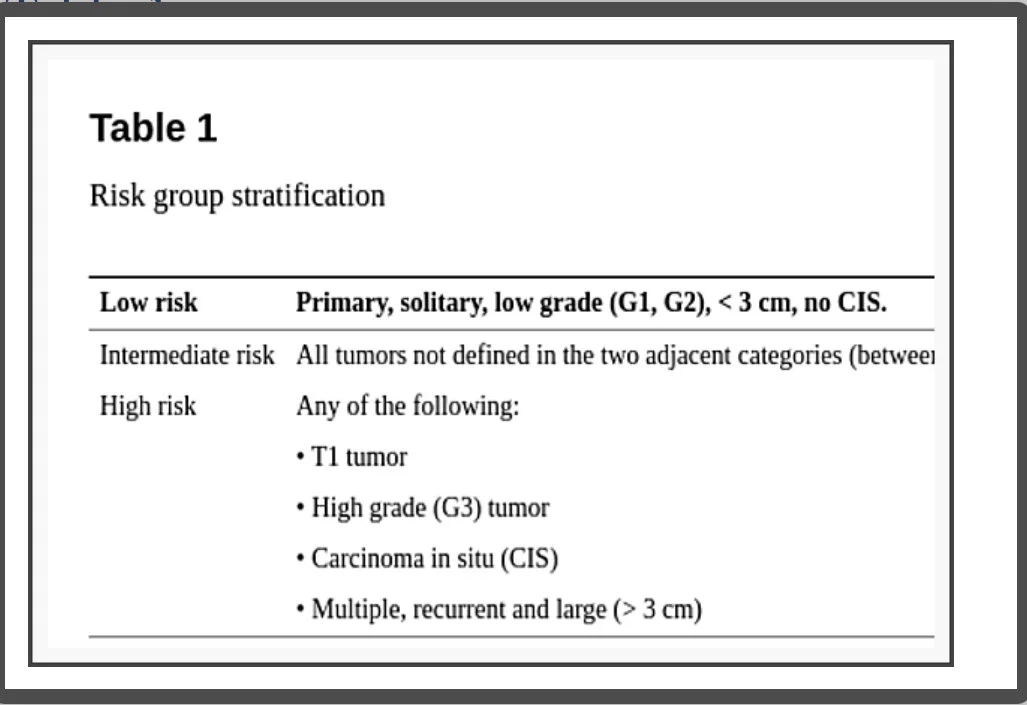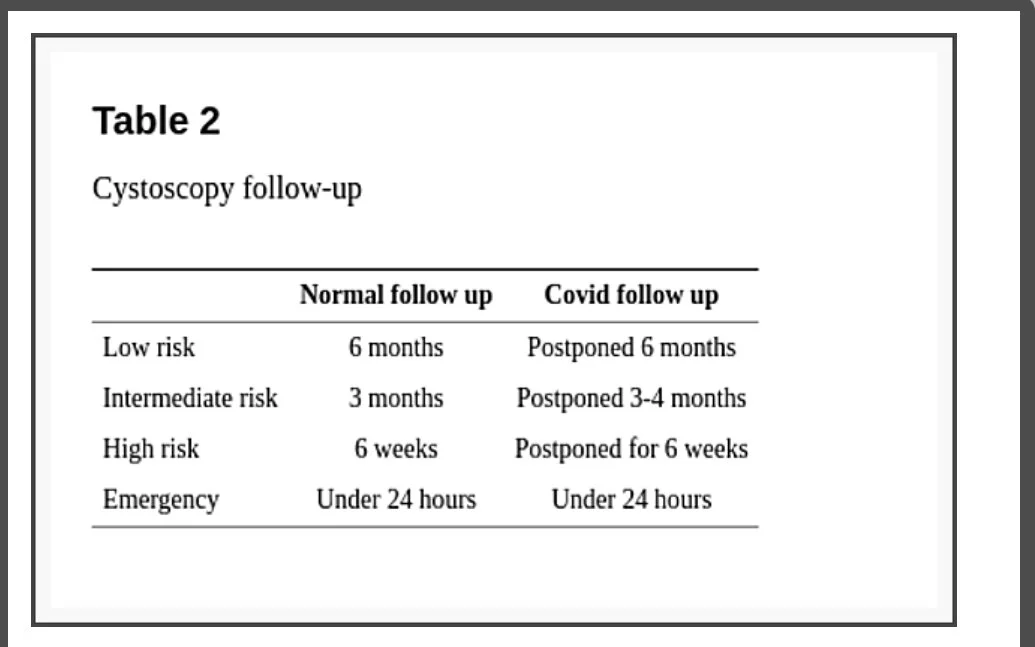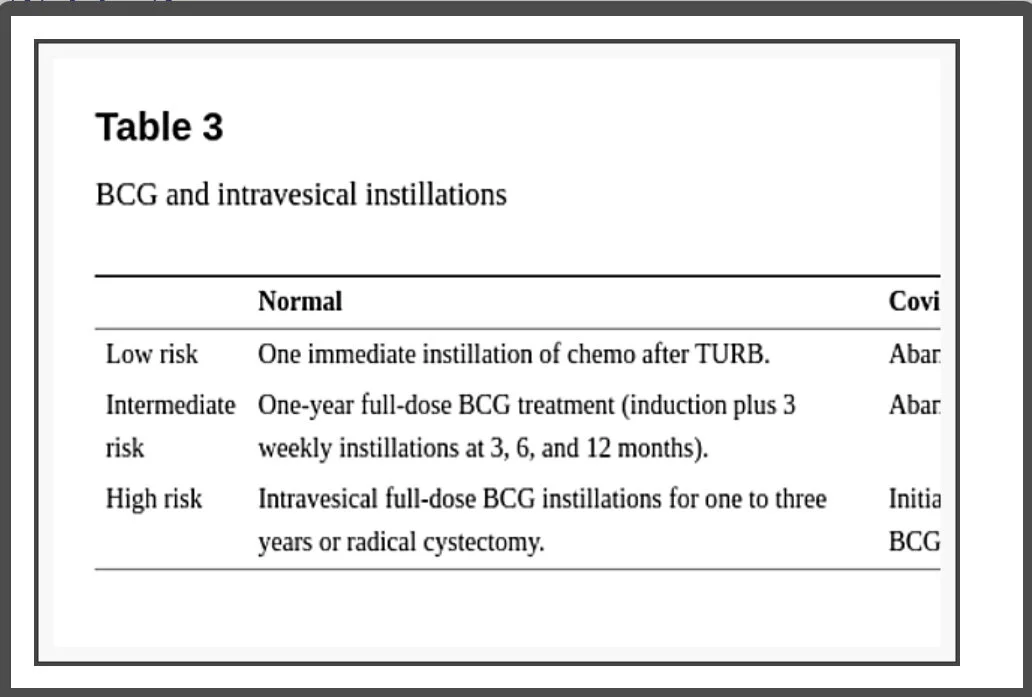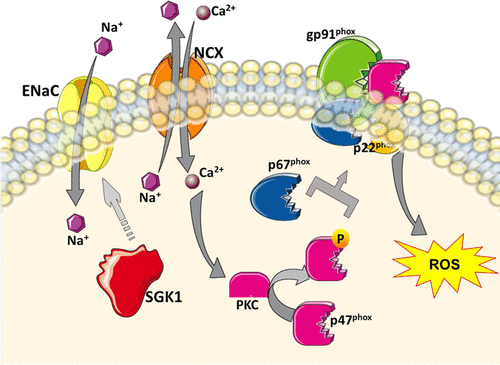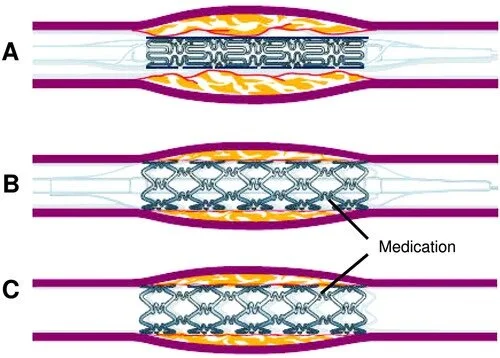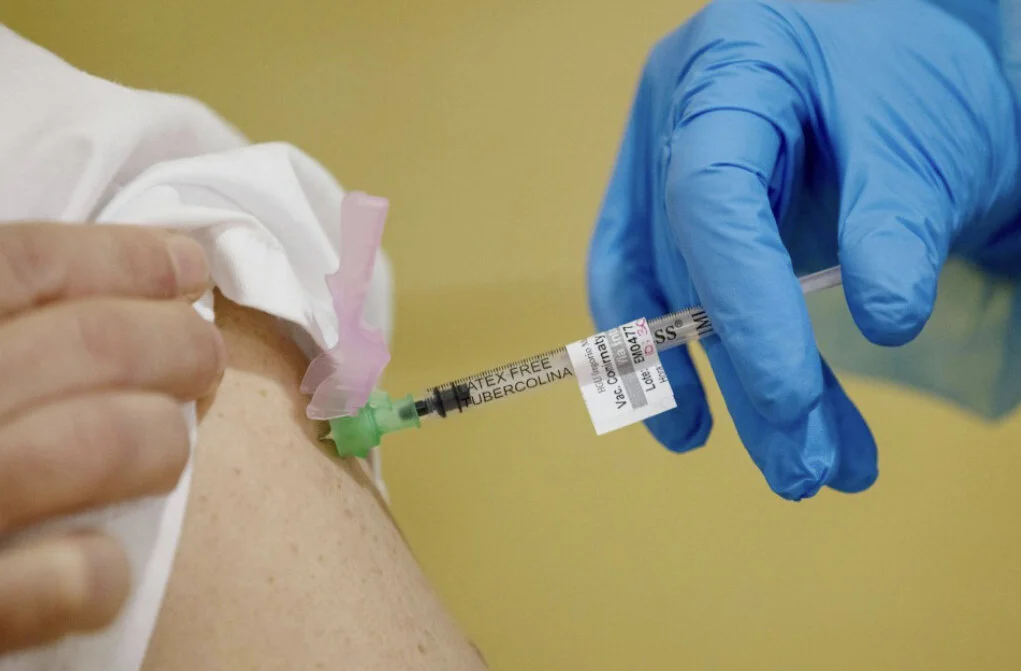Automotive aftermarket set for fast growth, prompting digital transformation of auto accessories supply chain logistics
Deloitte
The development potential of automotive aftermarket is being unleashed as China's automotive market matures, according to China automotive aftermarket logistics service insights, a joint report issued by Deloitte and JD Logistics. Accordingly, auto accessories business is playing a greater role in the development strategies of automotive OEMs, and is set to become a key segment in future market competition. Meanwhile, the transformation of parts and accessories services will bring more new opportunities to the logistics industry.
According to the report, China's car ownership reached 217 million vehicles at the end of 2017, ranking first worldwide in sales for an eighth straight year. As forecasted, vehicles aged between four and nine years old will account for more than 50% of the vehicles in China in 2018, bringing demand for auto repairs and maintenance to a peak. The automotive aftermarket's scale is expected to exceed RMB1 trillion in 2018, representing an annual growth rate of more than 30%. The rise of China's automotive aftermarket will bring business opportunities to its underlying sectors, including accessories supply chain segment, which is a target market of JD Logistics.
Compared to the automotive OEM supply chain, accessories supply chain management is more complicated. The variety, "long tail effect" and complexity of goods are major difficulties auto parts and accessories logistics face. Given increasing demand for timeliness, and cost control considerations, digital capacity is crucial for logistics companies, requiring stock capacity for a large volume of SKUs and predictive capacity based on big data.
Globally, however, the number of auto manufacturers already able to leverage digital accessories management is limited. "Logistics and supply chain companies with digital capacity are becoming the hard core driving digital transformation in the industry," says Zhang Tianbing, leader of Deloitte China consumer products & retail sectors.
Meanwhile, as emerging technologies power changes in car buying and aftermarket service experience, auto manufacturers must proactively respond to trends and reconsider how to connect with internet consumers to cope with their rising expectations for product and service experience. The report suggests identifying service opportunities by profiling and analysing consumer attitudes, needs, behaviour, and customer characteristics before innovating logistics and supply chains is an effective route to transformation for the logistics industry.
As next generation consumers are more reliant on the internet, the way people commute is being disrupted. The development and popularization of car sharing and new energy vehicles will impact the automotive aftermarket. Car sharing could centralize aftermarket logistics service, making it more effective, and change the currently small, fragmented and disorganized end-user market of auto accessories logistics by gradually bringing in standards and regulations. For new energy vehicles, although this emerging sector has changed the competitive landscape of the current auto accessories logistics sector, transport, recycling and warehousing of automotive batteries are raising the bar for the logistics industry.
It is clear that healthy development of the automotive aftermarket will rely on continuous smart transformation of the auto accessories supply chain. In future, the auto accessories supply chain will have ample space for development. By building a complete supply chain, companies can manage inventory dynamically as well as improve upstream and downstream transport time in return for higher efficiency and cost advantages.
"As the new economy prospers, the potential of the auto accessories supply chain is tremendous. Existing pain points and potential challenges will become the main driver for companies to unleash their power," Zhang concludes.
Post-disaster Zhengzhou: When a City Suddenly Lost Internet
Du Qiang From Story hardcore
In Zhengzhou after the flood, a person with water, electricity and the Internet at the same time is extremely lucky.
Water outages are most widespread.In supermarkets, large bottles of drinking water have been snapped up, and the remaining small bottles have been carried away in bags.In the twenty-sevenSmall hotel near the tower, customers crowded around the front desk complaining, “It really stinks!” The boss pulled out the large plastic bucket from under his feet and pointed at the doorA deep pit of water, “Fill it up, punch it with that.”
The whole Zhengzhou City, a large area of power outages, old blocks because of aging electrical circuits can not be spared. A large number of shops along the street closed their doors, and fresh food businesses that did not close their doors sold fish and milk at a discount that could not be refrigerated. And dug out a long time did not use the spring scale, but the settlement link is often unable to complete - cash disappeared from life for too long, banks are still closed due to power outages, some even return to the original stage of "bartering."
In a fresh supermarket by the Qili River, the boss sat in front of the shop, A middle-aged man came out of a dark shop, carrying a bag of onions and small winter melon, weighing the total price of about 20 yuan.
“Cash only.”
"Can't use Alipay?" Asked the customer.
"Can you open Alipay?"
Middle-aged men don't have cash. After looking for a long time in the black leather bag, he could only hand the boss a pack of cigarettes - blue packaging, the market price of about 19 yuan. (This is reminiscent of the post-World War II economic collapse in Germany, where people used stored, easily divided cigarettes as "currency.")
Water and electricity outages exist in the memory of generations, but the sudden disruption of the Internet has turned Zhengzhou into an unprecedented testing ground. After the disaster in Zhengzhou, it is surprising that there are several meters of water in the tunnel of Longhai Road and cars floating in it. It is also in this city of 12,600,000 that the order given by Internet technology has failed, and the old order has failed.
After July 20, Zhengzhou seemed to go back to the year 2000 overnight. Where can we find an oasis of digital civilization in a city where there is no electricity or internet? Citizens are deeply disturbed by it.
Zhengzhou East Railway Station is near the water, electricity, network without the three areas. The gates at the exit gate of the high-speed railway were all malfunctioned. Passengers who needed to brush their ID cards or tickets to exit the station simply squeezed out of the gate which could not be rotated. And when they walk out of the station square, they will find that the city's main public transport, has become a bike sharing and fast dog taxi, goods Lala.
For security reasons, several major ride-hailing platforms have suspended business within Zhengzhou. Most bus lines also stop running. So you'll see passengers pulling suitcases rashly stop Shunfeng Express's van and ask the driver loudly, "do you want to pull people?" And the intersection to the southwest of the station has become a trading place. when a taxi comes empty, passengers will immediately gather around it. "you can pay as much as you say and don't turn on the meter."
But drivers don't care about the price. They always ask, “Do you have any cash? WeChat Alipay can't brush.”
The first three groups of people who came forward to inquire left disappointed. Occasionally, passengers questioned the driver's "fortune," The driver did not deliberately make a grievance expression, "I this is a new energy vehicle, this point of electricity is finished, do not know where to charge, electricity piles are waste." According to a data from Zhengzhou, more than 80% of the city's taxis have been replaced by new energy vehicles.
At noon on the 21st, hundreds of passengers stranded at the intersection in front of the station, in the crowd, bags and water between the shuttle of private cars, fast dog taxi and goods Lala occupy the absolute main force. No matter whether it is Wuling Hongguang or Jinbei, passengers do not dislike, even sitting on strangers' lap is quite tolerant.
After I decided to go to the first affiliated hospital of Zheng University, I stopped a truck with a fast dog. The driver was a middle-aged man of about 40 with a short crew cut, who looked well established. But when asked about the price of a one-way trip, he suddenly became shy. "How much did you say?" After some pushback, I realized that he was new to this sudden new business. He pulled out his phone. "I'll see how far it is on the Gaudet map." But a minute later, he said, "No net."
After the development of Internet technology, city dwellers have become accustomed to the order it shapes, it defines the flow of transactions, Even the sense of trust between people is also built on the mechanism of Internet products, you will not worry about Taobao shop owner wrong money, nor for Didi driver detour and anxiety, lost mobile phone seven or eight out of ten can be found back. But on July 21st in Zhengzhou, I tried cautiously with the fast dog driver, as if trying to recover a skill that had been unfamiliar for many years.
This unprecedented situation is a test for the citizens of Zhengzhou. It seemed to me that they behaved very civilly. Beneath the malfunctioning traffic lights, the drivers were politely courteous, you might even say with a touch of shyness in their smiles. When a taxi stopped at the East Railway Station Square, the passenger got off and found that he did not have the cash, he repeatedly apologized, the driver just waved his hand, hit the steering wheel and headed east.
There are angry and angry situations, of course, but they can be forgiven depending on the plot. In Dongzhan South Road, a guy with a camouflage backpack tried to scan a Meituan bicycle. After many attempts to no avail, he was sweating heavily. He held up his phone and twirled it around in vain, like the African immigrant in Horsey's Gold Award photography "The Signal." A few minutes later he threw two punches at the QR code of Meituan Bicycle.
After the floodThe Streets of Zhengzhou
There are nearly 100 shared bikes scattered around South Dongzhan Road, Meituan, Green Orange and Hello were divided into three groups. In half an hour, more than 30 people tried to scan the code, but only two of them caught the weak signal. A student like young man successfully scan the code, humming the Divine Comedy, "riding my beloved bicycle..." More people are left to look around for an Internet product more suited to the moment of failure - a shared bike with a broken lock.
In such extreme cases, newer may not necessarily mean better. Meituan Bicycle has launched a new generation of bicycles in Zhengzhou, giving up the traditional lock. The new lock probably applies the principle of electromagnetism. When returning the car, it still needs to scan the code and determine whether it is located in the designated parking space by the system. However, the extra network communication makes the people of Zhengzhou very annoyed at the moment.
On the other hand, some seemingly primitive technology may come in handy. An emergency guide circulated among media groups ahead of the flood suggested a technology that could send content directly to 1069009009 without a 4G signal for help on Weibo. The microblogging system has left a lifeline through the 2G network.
Just like Zhengzhou,The original city is not prepared for more than 500 millimeters of precipitation a day, Most Internet technology companies add more and more sophisticated designs to the foundation of network communications, but who knows what happens when that foundation is gone without one.
The passenger is inquiring about the taxi
The Internet is the new infrastructure, the hydroelectric coal of our age. There is nothing false about that. This is especially unlikely when you continue to walk west along South East Railway Station Street and see bewildered crowds holding mobile phones.
Shops along the route are mostly closed, especially large chains such as McDonald's, and small stores are still open.
"Hello, I booked on Ctrip." I said to the receptionist at a small hotel called Yi Lai.
"Ctrip?" She pointed to the computer in front of her. "I have no power now. Where can I see where you booked me?" Under her hand was a paper form, each room number drawn with thick lines. A steady stream of customers came in, many went to the front desk,Take a look.Eye yellow, green all kinds of shared charge treasure, and turned away.
3 km west, power restored after passing the Green Center. At a lamb soup restaurant, the boss told me that I can't order a takeaway now. “We didn't stop Meituan. We turned it off manually. It's just a list. 40 minutes without a rider, then the guest will return, the meal has already been done, we still have to bear the loss. Just turn it off.”
Without the Internet, life has to be readjusted everywhere. However, people who are not in it seem to have been unable to understand the feeling of not having a network.
On the evening of the 21st, Meituan sent a text message, “To ensure the convenience of public access in extreme weather, Meituan Bike will ride for free in Zhengzhou from 21st to 28th, the fee you paid has been refunded to the original account. Special reminder, before riding make sure the road and vision is good, standing water section, do not wade through water. Weather share, Zhengzhou refueling!”
After I received the message, I wanted to give my good friends a hug and thank them for their thoughtfulness, but also to whisper in his ear, stupid, the problem is not money at all.
In the evening, Zhengzhou began to rain heavily again. After 8: 30, wearing a raincoat, I rushed from the Provincial People's Hospital to my hotel near Zhengxing Street. The street lights and traffic lights along Renmin Road were all extinguished. The vision and road conditions were very bad. During the 40-minute walk, more than a dozen shared bikes were encountered along the way, but there was still no Internet, so we could not scan the code.
I turned on the lights on my phone and stared at a GoDaddy map downloaded offline as I walked. After the flood, Gold Online Storm Help function, in the emergency location, will show a red mark on the map. But if you are not in the oasis of the Internet, you have no idea to open it. Friends in Beijing can use it, but they don't need it.
According to the map information, I walked to the Erqi Tower nearby, after turning a fence, was stopped by a figure.
"Brother don't go, there is a big puddle in front, you can't pass." He looked older than me, but it was so dark then.
"Walk around that side, can pass, you watch the puddle, don't step on." He continued.
I thanked him and asked if he was a government worker.
“No. I live nearby and I knew there was a big pit. I thought no, I stood here for a while.” He saw the map in my phone. "Don't just look at that. It doesn't work now."
There is no doubt that until power and Internet are restored, the slow restoration of order in the city of Zhengzhou depends on ordinary people, the truckers, the street cleaners, The dedicated traffic police, as well as the hotel downstairs for passers-by to open a free Internet hotspot waitress, is the Internet technology developed before we have empathy, responsibility, and even for self-interest purposes. Not to be nostalgic or defensive about these "primitive" things, but to be honest, because of the advanced technology, the fine governance, sometimes I have almost forgotten them.
In the afternoon of the 21st, in a small square near Dongnan Road, I met Zhang, a resident nearby. He had not been out for two days and was sitting on the steps looking out. He told me about the difficulty of water and power outages nearby, talking about the floating cars in the culvert not far away, but finally concluded, "Henan people are afraid of what, disasters see much."
For two days, Big Brother Zhang did not dare to use his mobile phone, “There is only (percent) more electricity left. But it also saves electricity, no internet.”
"So what do you think about the news and the government circulars?" I asked.
“I was told by others (neighbors) that there was another flood discharge. We're all very close.”
Since the floods, most of the city government's information has been transmitted through the Internet. Television stations have also had related news, but it is the same old problem. There is no electricity and no Internet. It is probably impossible to estimate how many people are thus isolated from important information.
Now Zhang Eldest Brother is worried, worried about mobile phone battery can not contact home, intend to drive back, and worry about the road is not safe.
He was originally from Xuchang and worked hard in Zhengzhou for many years. The youngest daughter is now 3 and has only been back to her hometown twice. "I always want to go back, let the old see the children, my wife is afraid of going back to the trouble, always said WeChat video to see on the line, the same."
"How can that be the same?" "It's definitely different," he said.
Looking at the global "flying car", is human flight far away?
Electronic Engineering Album
EVTOL, manned drones, flying cars, this is the same product of the future. It will address ground traffic and provide a second airspace for low-altitude traffic flights. It will also be a transitional phase for humans into space. Are flying cars reliable? What is the status and when will it become widespread?
More recently, Tesla has been blasted or moved into the flying car market, once again pushing manned drones to the forefront of technology.
allBall Flying Cars Inventory
We don't know much about flying car companies and products. However, more than 200 companies worldwide have been developing and testing vehicles, the longest for more than a decade. This section mainly takes stock of flying cars and companies that have been tested, products, designs, or more famous. The following rankings are in no particular order and do not represent market position or technological leadership.
Tesla may enter board, flying cars may start popular
According to reports, investment bank Morgan Stanley recently released an investment research report, the target price of Tesla shares at 900 dollars, continue to maintain its stock "overweight" rating. Morgan Stanley analyst Adam Jonas. Jonas said in the report that he did not believe Tesla would not enter the "electric vertical take-off and landing vehicle" (eVTOL) market.
Tesla CEO Elon Musk did not really talk about eVTOL, Jonas said. And, when asked about eVTOL, he dismissed the "flying car."
But, given that Tesla is aggressively "industrializing" electric cars, self-driving cars, battery storage, connected car networks and electric vehicle infrastructure, he's not convinced Tesla has no interest in eVTOL, the technologies are just too close.
Jonas even thinks it's no longer a matter of "if" Tesla will enter the eVTOL market, but "when."
The above picture is a rendering of the Tesla flying car, from the point of view of industrial design, is indeed "Tesla": cutting-edge technology, industrial design first-class. And true aerodynamics. However, it is not clear where people will be "loaded."
Volocopter, Germany, urban air traffic trailblazer
Micron Technology, Inc. (NASDAQ: MU), its strategic investment entity, Microns Ventures, announced on October 24, 2019. (NYSE: VW) Ventures is participating in a Series C investment in urban air traffic trailblazer Volocopter. Volocopter Is a manufacturer of electric vertical take-off and landing aircraft that meet today's safety standards for air transport and exceed those for helicopters. Volocopter is seeking to commercialise an autonomous and on-demand air taxi service.
Extended air traffic
As a growing population moves to cities, existing traffic patterns face limits. The need to find a solution inspires Volocopter Such as the explosive innovation and disruptive growth of private enterprises. The Germany-based start-up has been experiential testing its air taxi technology for almost a decade, with its electric vertical take-off and landing (eVTOL) Airplanes not only meet the need to constantly reinvent the transportation systems of megacities, but also provide people with new ways to commute.
“Volocopter Is a wonderful company dealing with a favorable position in driving change in the transportation and transportation market and contributing to building sustainable and environmentally friendly transportation infrastructure, ” René, Vice President, Corporate Business Development, Micron Technologies Hartner said. “Micron in Volocopter Uber's investment is consistent with our view that memory and storage solutions play a key role in enabling the breakthrough capabilities required for autonomous vehicles and edge computing. ”
Micron is the largest supplier of memory to the automotive industry and its high-performance solutions facilitate the development of autonomous driving, virtual reality and air travel. MicronVenture vs. Volocopter Micron's investment reflects its continuous search for new and innovative solutions.
"We are proud to partner with Micron to realize our bold vision of making urban air traffic a reality," Volocopter CEO Florian Reuter Said.“Volocopter Will help major cities transform their transport infrastructure and thus move towards a more sustainable future. Our goal is to provide affordable, automated, on-demand air taxi services to pick up and drop off passengers in megacities - all for the cost of a taxi ride and significant time savings. ”
In addition to air taxis, Volocopter is developing an ecosystem for urban air traffic while working with the European Union's Aviation Safety Agency to seek Class I certification for use in commercial transport. This work includes building connectivity VoloCity aircraft with major downtown transportation hubs such as airports and business districts for VoloPorts.
In addition, Volocopter has the VoloConnect Long Way concept aircraft and logistics drones:
Volocopter is doing well in Singapore, Southeast Asia and Europe.
In July 2017, Volocopter collaborated with the Dubai government to explore smart city air traffic;
Volocopter makes its first flight in the European city of Stuttgart on October 8, 2019;
Volocopter, Urban Air Traffic (UAM), December 9, 2020 Announced a commitment to work closely with Singapore / Bruhsar City to launch air taxi services in Singapore after two years. Volocopter works with the Economic Development Board of Singapore (EDB) and the Civil Aviation Authority (CAAS) Air taxi services in the Southeast Asian city-state are planned for the next three years;
On June 21, 2021, Volocopter 2X made its first flight at the French Air Show and is expected to become one of the Paris air taxis in 2024.
June 24, 2021 The European Union's aviation safety agency issued its first certificate in a new program under which drone manufacturers or operators can ask the agency to verify the design of drones used for specific purposes. The first such certificate was granted Volocopter VC200-2;
Japan Airlines partners with Volocopter to launch flying car service in 2025
In January 2021, a French company, FLY-R, designed a prototype of a new "biplane" drone. It features a unique diamond wing design that claims to be able to bring some distinct advantages.
In the latest display of the R2-150 The prototype is formed by a pair of front wings disposed at a low point, and a couple of rear wings disposed high, The front wings sweep back and the rear wings sweep forward and tilt down, so they join the front wing at the tip. It's almost a biplane, except the ends of the upper and lower wings are pinched together.
FLY-R The company, based in the Indian Ocean on the French island of Reunion, says the diamond design is superior to conventional wings in many ways. First, the wingspan has been cut by about half, and aerodynamic drag has been reduced. In addition, the structural mass has been reduced by about a third, and the aircraft remains stable over a wide range of speeds and is highly maneuverable.
Currently battery-powered R2-150 Is designed for completely autonomous missions such as surveillance, observation and reconnaissance. It has a wingspan of 1.5 meters (4.9 feet), a cruising speed of 115 kilometers per hour (71 miles per hour) and can fly for two hours per charge -- transmitting live video as it flies.
Other models are designed to go farther, carry heavier payloads and fly faster. For example, the jet-powered R2-HSTD plans a top speed of Mach 0.65 (803 km / h or 499 mph). It is intended as a target drone, for use in military exercises.
FLY-R even has plans for a short- and medium-range passenger aircraft, named the Crystal CR-1200. FLY-R Crystal The CR-1200 should be able to carry items weighing up to 800 kilograms (1,764 pounds). The aircraft can accommodate two pilots and eight passengers (although other configurations may be available), It will feature a hybrid system in which a fuel-burning generator will recharge an onboard battery pack, which in turn will power an electric motor for two push-back propellers. At its cruising speed of 350 km / h (217 mph), It can travel more than 1,000 kilometers (621 miles) without refueling -- a figure that would increase if it was not carrying the maximum possible payload.
Read More
Grid Core $100m Expands New York Plant, CEO Quashes Intel Takeover Rumors, Says IPO Will Go Ahead
U.S. semiconductor maker Global Foundries will build a second plant near its headquarters in Malta, New York, and invest $10 million to boost capacity to ease a global chip shortage, the company said Monday. Also participating in the day were U.S. Secretary of Commerce Gina Raimondo (Gina Sen. Chuck Schumer (D-N.Y.) and Sen. Raimondo (R-Mo.).
Meanwhile, in response to the recent "Wall Street Journal" reported that Intel (Intel) is ready to buy Grid Core for $30 billion, Gridcore CEO Tom Caulfield also denied on the spot and will continue to seek an IPO listing.
During the IPO, you'll see all kinds of rumors
Thomas Caulfield said the Intel deal was speculation and denied there had been such discussions. “We did not open any discussions on this. You're likely to see a lot of speculation as the company moves ahead with its IPO plans.”
From the grid core aspect of the response, they deny Intel's $30 billion acquisition news, whether it is really unaware or can not admit. However, it has also been reported that Intel's acquisition is likely to cross the grid core company and the parent company - the United Arab Emirates Mubadala Investment Fund (UAE) to talk, The latter burned tens of billions of dollars on grid cores.
But the focus of Mubadala is still to push Grid Core to go public according to established plans, people familiar with the matter said.
Intel 300000000000 US dollars to acquire Grid Core has a great impact, not only will reshape the global wafer foundry market pattern, For AMD is also at stake, grid core is still their important long-term OEM partner, if bought by Intel, the relationship will be somewhat troubled.
NH Investment & Securities analysts said the grid core could still be attractive to Intel despite its lack of up-to-date production processes, Business Korea reported. In the long-term development of the company, Grid Core accumulated a wide range of customers, IP and technology patents, which created a high asset value for its. For potential deals, these factors are as important as production processes, the agency argues.
Also, given that Intel's corporate culture and customer relationships revolve around its dominance of the PC and server CPU markets, it would be difficult for the company to re-enter the foundry space if it relied solely on process technology. The combination of Grid Core's assets and Intel's production processes will provide the necessary synergies for the foundry market.
The agency noted, however, that if the deal is finalized, competition in the foundry industry will become more intense, affecting incumbents such as Samsung and TSMC.
As for the expansion news, the grid cores are still in place a day early Official Account message template On sold a customs son, let a person think will announce and Intel, we did not expect to wait for the announcement of a new grid core brand and expansion of the news...
Grid Core said in its official news release that it will invest $10 million to immediately add 150,000 wafers a year to its existing Fab 8 fab to help solve the global chip shortage. Grid Core just moved its headquarters from California to New York earlier this year.
Later, Grid Core plans to build a new fab that will create more than 1,000 direct high-tech jobs and thousands of indirect jobs in the region, including high-paying construction jobs. According to Fab 8's successful investment model, Grid Core plans to fund new facilities through a public-private partnership that includes customer, federal and state investments. This additional capacity will meet growing demand for secure, feature-rich chips in high-growth markets including cars, 5G connectivity and the Internet of Things.
"There has been a chip shortage for 15 years." Thomas Caulfield said at the launch. These investments aimed at expanding Grid Core's U.S. manufacturing footprint are part of the company's broader global expansion plans, These include the recently announced new plant in Singapore and the planned $10 billion expansion of capacity in Germany, all to meet growing demand from customers worldwide.
Grid Core employs more than 15,000 people worldwide, 7,000 in the United States and nearly 3,000 at its headquarters in Malta, New York. Over the past decade, Grid Core has invested more than $15 billion in its Fab 8 plant to support innovation and increase production capacity.
Apple’s Vertical Integration
When Apple was preparing a metal case for the MacBook, Apple's chief designer Jony Ive thinks there is a huge problem with metal: It doesn't transmit light. That means adding a light to the MacBook, such as a laptop breathing light, would require more holes in the metal, but Ive thinks too many holes would be unsightly.
According to legend, Ive put together a team to work specifically on this problem. They discovered that tiny holes drilled by lasers into aluminum metal could allow light to come through -- and no one could see the holes. Apple didn't have the ability to do this on its own at the time, but market research revealed that a company in the United States had lasers capable of punching holes 20 μm in diameter at a cost of $250,000. So Apple bought the company.
Just to let aluminum metal can be transparent and take into account the beauty of this one thing, there is such a big move. Although the technology is no longer rare, the legacy of that acquisition can still be seen on devices like Apple's TrackPad.
Apple doesn't do this kind of thing once or twice: chip, display (LTPO, microLED), sensor (Face ID / Touch ID), brake (Taptic) (Engine) and other technologies, is a word against the acquisition. Like just for Face on the iPhone X ID, Apple for this acquisition of related enterprises at least include 3D sensing technology enterprise PrimeSense, camera module manufacturer LinX, AR company Vrvana, image sensor supplier InVisage Tech, AR eyewear manufacturer Akonia Holographics and others.
Apple now makes (or co-manufactures) its own chips and components, unlike its upstream suppliers, in that they are not for sale, but for its own consumer end products. One of the big differences between Apple's thinking and that of regular consumer electronics manufacturers is that there are functional / performance requirements first and then trying to figure out a solution - if you can't find one, try to build it yourself or help upstream manufacturers build it together. This line of thinking seems to have been handed down from Apple's earliest days.
EE Times USA has written an article in 2018 entitled Apple Goes Vertical & Why It The Matters article describes how Apple can acquire, invest, build its own team, and cooperate hard and soft to achieve a particular feature. Like Face. ID, not only to acquire a bunch of related image sensors, optical technology enterprises, but also to add the Neural Engine module in the chip, and to cooperate with the previous Secure Enclave, and support is most rapid at the system and software level.
Google predates Android Era 4.0 (2012) has done face recognition features in the operating system level, but both from the optical and sensor recognition level, Or chip TEE environment, system implementation, are far from the user experience ready - Google as an operating system supplier, does not have Apple's vertical integration capabilities, natural experience and security discount. This is a typical example. What's more scary is that Apple usually builds a technology that is mature and then can fire up the technology and even the chain, structured light and 3D. ToF has this component (although it often fails, such as 3D touch).
Open RAN
As 5G is being deployed all over the globe, one of the new trends drawing a lot of attention is the Open RAN, which has been selected by a number of major operators for their 5G deployments.
Open RAN is made possible through standardized open network interfaces, defined in 3GPP, O-RAN Alliance, IEEE, and other SDOs and industry fora. To cater to all the diverse 5G use cases and operator’s deployment constraints, the standards define multiple NG-RAN architecture options and the associated open network interfaces. While these options are crucial in making 5G suitable to address all the requirements and challenges of the next generation mobile network, figuring out which option fits a particular practical use case is sometimes challenging. This is further exacerbated by the fact that relevant standards are scattered across multiple SDOs.
To help experts to unpack that complexity, Sasha Sirotkin, the 3GPP RAN3 Vice-chair has edited a new book ‘5G Radio Access Network Architecture: The Dark Side of 5G’, with material contributed by a number of domain experts, active in various 3GPP working groups.
The following material is provided by Sasha and the publisher Wiley-IEEE, as a short introduction to the topic.
Monolithic vs. split architectures
When discussing the 5G RAN architectures, we often talk about functional splits – as opposed to the “monolithic” architecture in which a gNB is defined, and often implemented, as a single network node. The assumption that split architectures are unique to 5G is not entirely correct. Even though 3GPP defined the 4G eNB as a single monolithic logical network node, in practice deployments with Remote Radio Heads (connected via CPRI) were rather popular. And of course, there was the FAPI specification from the Small Cell Forum for LTE, not to mention various proprietary split implementations.
What’s new in 5G
With the advent of 5G, the industry realized the need for better standardization of RAN in general, and functional splits in particular. During the 5G study in Release-14, 3GPP have considered multiple split variants, illustrated by the figure below.
After extensive discussions, 3GPP have reached the consensus to define two NG-RAN split architectures (in addition to the traditional “monolithic” one):
the high-level CU/DU split (option 2),
and NG-RAN architecture with separated control and user plane functions.
Naturally, Small Cell Forum also evolved their FAPI specification (option 6) to support 5G, while O-RAN Alliances defined the low-level split (option 7). Furthermore, CPRI specification was enhanced (and is now referred as eCPRI) to support not only option 8, but also higher splits. This joint effort across multiple SDOs is a testament to the importance of Open RAN to the whole industry, which is now enabled through the definition of open standardized network interfaces between the split NG-RAN network nodes.
Artificial Intelligence and Machine Learning
By Gino Masini, Yin Gao, Sasha Sirotkin
5G brings more stringent requirements for Key Performance Indicators (KPIs) like latency, reliability, user experience, and others; jointly optimizing those KPIs is becoming more challenging due to the increased complexity of foreseen deployments. Operators and vendors are now turning their attention to Artificial Intelligence and Machine Learning (AI/ML) to address this challenge. For this reason, following RAN plenary approval, 3GPP RAN3 has recently started a new Release-17 study on the applications of AI/ML to RAN.
AI can be broadly defined as getting computers to perform tasks regarded as uniquely human. ML is one category of AI techniques: a large and somewhat loosely defined area of computer algorithms able to automatically improve their performance without explicit programming. AI algorithms were first conceived circa 1950, but only in recent years ML has become very popular partly due to massive advancements in computational power and to the possibility to store vast amounts of data. ML techniques have made tremendous progress in fields such as computer vision, natural language processing, and others.
ML algorithms can be divided into the following types:
-Supervised learning: given a training labeled data and desired output, the algorithms produce a function which can be used to predict the output. In other words, supervised learning algorithms infer a generalized rule that maps inputs to outputs. Most Deep Learning approaches are also based on supervised learning.
-Unsupervised learning: given some training data without pre-existing labels, the algorithms can search for patterns to uncover useful information.
-Reinforcement learning (RL): unlike the other types, which include a training phase (typically performed offline) and an inference phase (typically performed in “real time”), this approach is based on “real-time” interaction between an agent and the environment. The agent performs a certain action changing the state of the system, which leads to a “reward” or a “penalty”.
Perhaps the most obvious candidate for AI/ML in RAN is Self-Organizing Networks (SON) functionality, currently part of LTE and NR specifications (it was initially introduced in Rel-8 for LTE). With SON, the network self-adjusts and fine-tunes a range of parameters according to the different radio and traffic conditions, alleviating the burden of manual optimization for the operator. While the algorithms behind SON functions are not standardized in 3GPP, SON implementations are typically rule-based. One of the main differences between SON and an AI-based approach is the switch from a reactive paradigm to a proactive one.
The study has just begun, and at the time of writing we can only provide initial considerations. According to the mandate received from RAN, our study focuses on the functionality and the corresponding types of inputs and outputs (massive data collected from RAN, core network, and terminals), and on potential impacts on existing nodes and interfaces; the detailed AI/ML algorithms are out of RAN3 scope. Within the RAN architecture defined in RAN3, this study prioritizes NG-RAN, including EN-DC. In terms of use cases, the group has agreed to start with energy saving, load balancing, and mobility optimization. Although the importance of avoiding a duplication of SON was recognized, additional use cases may be discussed as the study progresses, according to companies’ contributions. The aim is to define a framework for AI/ML within the current NG-RAN architecture, and the AI/ML workflow being discussed should not prevent “thinking beyond”, if a use case requires so.
Stay tuned for further updates as the study progresses in RAN3, or consider joining us in our journey into the “uncharted” territory of AI/ML in NG-RAN.
Electricity load forecasting: a systematic review
Isaac Kofi Nti, Moses Teimeh, […]Adebayo Felix Adekoya
Journal of Electrical Systems and Information Technology
Abstract
The economic growth of every nation is highly related to its electricity infrastructure, network, and availability since electricity has become the central part of everyday life in this modern world. Hence, the global demand for electricity for residential and commercial purposes has seen an incredible increase. On the other side, electricity prices keep fluctuating over the past years and not mentioning the inadequacy in electricity generation to meet global demand. As a solution to this, numerous studies aimed at estimating future electrical energy demand for residential and commercial purposes to enable electricity generators, distributors, and suppliers to plan effectively ahead and promote energy conservation among the users. Notwithstanding, load forecasting is one of the major problems facing the power industry since the inception of electric power. The current study tried to undertake a systematic and critical review of about seventy-seven (77) relevant previous works reported in academic journals over nine years (2010–2020) in electricity demand forecasting. Specifically, attention was given to the following themes: (i) The forecasting algorithms used and their fitting ability in this field, (ii) the theories and factors affecting electricity consumption and the origin of research work, (iii) the relevant accuracy and error metrics applied in electricity load forecasting, and (iv) the forecasting period. The results revealed that 90% out of the top nine models used in electricity forecasting was artificial intelligence based, with artificial neural network (ANN) representing 28%. In this scope, ANN models were primarily used for short-term electricity forecasting where electrical energy consumption patterns are complicated. Concerning the accuracy metrics used, it was observed that root-mean-square error (RMSE) (38%) was the most used error metric among electricity forecasters, followed by mean absolute percentage error MAPE (35%). The study further revealed that 50% of electricity demand forecasting was based on weather and economic parameters, 8.33% on household lifestyle, 38.33% on historical energy consumption, and 3.33% on stock indices. Finally, we recap the challenges and opportunities for further research in electricity load forecasting locally and globally.
Background
Electricity is the pivot in upholding highly technologically advanced industrialisation in every economy [1,2,3]. Almost every activity done in this modern era hinges on electricity. The demand and usage of electric energy increase globally as the years past [4]; however, the process of generating, transmitting, and distributing electrical energy remains complicated and costly. Hence, effective grid management is an essential role in reducing the cost of energy production and increased in generating the capacity to meet the growing demand in electric energy [5].
Accordingly, effective grid management involves proper load demand planning, adequate maintenance schedule for generating, transmission and distribution lines, and efficient load distribution through the supply lines. Therefore, an accurate load forecasting will go a long way to maximise the efficiency of the planning process in the power generation industries [5, 6]. As a means to improve the accuracy of Electrical Energy Demand (EED) forecasting, several computational and statistical techniques have been applied to enhance forecast models [7].
EED forecasting techniques can be clustered into three (3), namely correlation, extrapolation, and a combination of both. The Extrapolation techniques (Trend analysis) involve fitting trend curves to primary historical data of electrical energy demand in a way to mirror the growth trend itself [7, 8]. Here, the future value of electricity demand is obtained from estimating the trend curve function at the preferred future point. Despite its simplicity, its results are very realistic in some instances [8].
On the other hand, correlation techniques (End-use and Economic models) involve relating the system load to several economic and demographic factors [7, 8]. Thus, the techniques ensure that the analysts capture the association existing between load increase patterns and other measurable factors. However, the disadvantage lies in the forecasting of economic and demographic factors, which is more complicated than the load forecast itself [7, 8]. Usually, economic and demographic factors such as population, building permits, heating, employment, ventilation, air conditioning system information, weather data, building structure, and business are used in correlation techniques [7,8,9]. Nevertheless, some researchers group EED forecasting models into two, viz. data-driven (artificial intelligence) methods (same as the extrapolation techniques) and engineering methods (same as correlation the techniques) [9]. All the same, no single method is accepted scientifically superior in all situations.
Also, proper planning and useful applications of electric load forecasting require particular “forecasting intervals,” also referred to as “lead time”. Based on the lead time, load forecasting can be grouped into four (4), namely: very short-term load forecasting (VSTLF), short-term load forecasting (STLF), medium-term load forecasting (MTLF) and long-term load forecasting (LTLF) [6, 7, 10]. The VSTLF is applicable in real-time control, and its predicting period is within minutes to 1 h ahead. The STLF is for making forecasting within 1 h to 7 days or month ahead [11]. It is usually used for the day-to-day operations of the utility industry, such as scheduling the generation and transmission of electric energy. The MTLF is used for forecasting of fuel purchase, maintenance, utility assessments. Its forecasting period ranges from 1 week to 1 year. While the LTLF is for making forecasting beyond a year to 20 years ahead, it is suitable for forecasting the construction of new generations, strategic planning, and changes in the electric energy supply and delivery system [10].
Notwithstanding the above-mentioned techniques and approaches available, EED forecasting is seen to be complicated and cannot easily be solved with simple mathematical formulas [2]. Also, Hong and Fan [12] pointed out that electric load forecasting has been a primary problem for the electric power industries, since the inception of the electric power. Regardless of the difficulty in electric load forecasting, the optimal and proficient economic set-up of electric power systems has continually occupied a vital position in the electric power industries [13]. This exercise permits the utility industries to examine the dynamic growth in load demand patterns to facilitate continuity planning for a better and accurate power system expansion. Consequently, inaccurate prediction leads to power shortage, which can lead to “dumsor” and unneeded development in the power system leading to unwanted expenditure [7, 14]. Besides, a robust EED forecasting is essential in developing countries having a low rate of electrification to facilitate a way for supporting the active development of the power systems [15].
Based on the sensitive nature of electricity demand forecasting in the power industries, there is a need for researchers and professionals to identify the challenges and opportunities in this area. Besides, as argued by Moher et al. [16], systematic reviews are the established reference for generating evidence in any research field for further studies. Our partial search of literature resulted in the following [10, 12, 17,18,19,20,21] papers that focused on comprehensive systematic review concerning the methods, models, and several methodologies used in electric load forecasting. Hammad et al. [10] compared forty-five (45) academic papers on electric load forecasting based on inputs, outputs, time frame, the scale of the project, and value. They revealed that despite the simplicity of regression models, they are mostly useful for long-term load forecasting compared with AI-based models such as ANN, Fuzzy logic, and SVM, which are appropriate for short-term forecasting.
Similarly, Hong and Fan [12] carried out a tutorial review of probabilistic EED forecasting. The paper focused on EED forecasting methodologies, special techniques, common misunderstandings and evaluation methods. Wang et al. [19] presented a comprehensive review of factors that affects EED forecasting, such as forecast model, evaluation metric, and input parameters. The paper reported that the commonly used evaluation metrics were the mean absolute error, MAPE, and RMSE. Likewise, Kuster et al. [22] presented a systematic review of 113 studies in electricity forecasting. The paper examined the timeframe, inputs, outputs, data sample size, scale, error type as criteria for comparing models aimed at identifying which model best suited for a case or scenario.
Also, Zhou et al. [17] presented a review of electric load classification in the smart-grid environment. The paper focused on the commonly used clustering techniques and well-known evaluation methods for EED forecasting. Another study in [21] presented a review of short-term EED forecasting based on artificial intelligence. Mele [20] presented an overview of the primary machine learning techniques used for furcating short-term EED. Gonzalez-Briones et al. [18] examined the critical machine learning models for EED forecasting using a 1-year dataset of a shoe store. Panda et al. [23] presented a comprehensive review of LTLF studies examining the various techniques and approaches adopted in LTLF.
The above-discussed works of literature show that two studies [20, 21] address a comprehensive review on STLF, [23] addresses forecasting models based on LTLF. The study in [24] was entirely dedicated to STLF. Only a fraction (10%) of above systematic review studies included STLF, MTLF and LTLF papers in their review; however, as argued in [10], the lead time (forecasting interval) is a factor that positively influences the performance of a chosen model for EED forecasting studies. Again, a high percentage of these studies [10, 12, 17,18,19,20,21,22, 24] concentrated on the methods (models), input parameter, and timeframe. Nevertheless, Wang et al. [19] revealed that the primary factors that influence EED forecasting models are property (characteristic) parameters of the building and weather parameters include. Besides, these parameters are territorial dependant and cultural bond. Thus, the weather pattern is not the same world-wide neither do we use the same building architecture and materials globally.
Notwithstanding, a higher percentage of previous systematic review studies overlooked the origin of studies and dataset of EED forecasting paper. Also, only a few studies [12, 17, 19] that examined the evaluation metrics used in EED forecasting models. However, as pointed out in [17], there is no single validity index that can correctly deal with any dataset and offer better performance always.
Despite all these review studies [10, 12, 17,18,19,20,21,22, 24] on electricity load forecasting, a comprehensive systematic review of electricity load forecasting that takes into account all possible factors, such as the forecasting load (commercial, residential and combined), the forecast model (conventional and AI), model evaluation metrics and forecasting type (STLF, MTLF, and LTLF) that influences EED forecast models is still an open gate for research. Hence, to fill in the gap, this study presents an extensive systematic review of state-of-the-art literature based on electrical energy demand forecasting. The current review is classified according to the forecasting load (commercial, residential, and combined), the forecast model (conventional, AI and hybrids), model evaluation metrics, and forecasting type (STLF, MTLF, and LTLF). The Preferred-Reporting Items for Systematic-Review and Meta-Analysis (PRISMA) flow diagram was adopted for this study based on its ability to advance the value and quality of the systematic review as compared with other guidelines
……
most used algorithms for electricity forecasting
Conclusions
The current study sought to reviewed state-of-the-art literature on electricity load forecasting to identify the challenges and opportunities for future studies. The outcome of the study revealed that electricity load forecasting is seen to be complicated for both engineers and academician and is still an ongoing area of research. The key findings are summarised as follows.
1.
Several studies (90%) have applied AI in electrical energy demand forecasting as compared with traditional engineering and statistical method (10%) to address energy prediction problems; however, there are not enough studies benchmarking the performance of these methods.
2.
There are few studies on EED forecasting in Africa countries (12 out of 67). Though the continent has progressive achievement in the creation of Regional Power Pools (PPP) over the last two decades, the continent still suffers from a lousy power network in most of its countries, leaving millions of people in Africa without electricity.
3.
Temperature and rainfall as an input parameter to the EED forecasting model are seen to have a divergent view. At the same time, some sections of research recorded an improvement in accuracy and reported no improvement in accuracy when introduced and input. However, the current study attributes this to the difference in automorphic temperature globally and the different economic status among countries. An additional investigation will bring more clarity to the literature.
4.
This study revealed that EED forecasting in the residential sector had seen little attention. On the other hand, Guo et al. [78] argue that the basic unit of electricity consumption is home.
5.
It was observed that there had been a global increase in residential electricity demand, this according to the report in [49] can be attributed to the growing rate of buying electrical equipment and appliances of low quality due to higher living standards. However, a further probe into Soares et al. [49] assertion will bring clarity to literature because of the discrepancy in opinions in literature.
6.
Lastly, the study revealed that there is a limited number of studies on load forecasting studies in Ghana. We, therefore, recommend rigorous researchers in this field in the country to enhance the economic growth of the country.
Our future study will focus on identifying the relationship between household lifestyle factors and electricity consumption in Ghana and predict load consumption based on identified factors since it is an area that has seen little or no attention in Ghana.
Current state of communication systems based on electrical power transmission lines
Antony Ndolo & İsmail Hakkı Çavdar
Journal of Electrical Systems and Information Technology
Abstract
Power line communication technology is a retrofit alternative technology for last mile information technology. Despite several challenges, such as inadequate standards and electromagnetic compatibility, it is maturing. In this review, we have analysed these obstacles and its current application status.
Introduction
Indeed, advancements in communication engineering and technology have brought in revolution in the telecommunication industry. One great impact has been in information and service delivery during the last decades of the twentieth century to date. This is due to the high demand for information created by the huge human population. Better methods and channel models for signal transmission have been researched and developed. For instance, fibre optics has provided waveguide for numerous services at higher speed while inheriting other advantages such immunity to electromagnetic interferences amongst others [1, 2]. Despite all the positive attractions towards fibre communication, it is expensive to install and it is limited to certain areas. That is, remote, rural and mountainous areas. This has necessitated the search for alternative information transmission methods. Power line communication (PLC) is one such alternative.
Power line communication technology is the basically a technology that uses pre-existing and installed electrical power cables for transmission of information [3,4,5,6]. Traditionally, such electrical lines were designed exclusively for distribution and transmission of electricity at lower frequency. This frequency varies from country to country, mainly, 50 Hz or 60 Hz. Upon generation of electricity, it is distributed and transmitted through different voltage network. Firstly, electricity is transmitted over high voltage lines, then distribution is done over medium voltage lines, and lastly, it is converted/scaled down using transformers for the end-user consumption in the low-voltage lines. Figure 1 gives summary of PLC structure. This technology is therefore retrofit and economically cheaper compared to other methods. There is no need for new cable installations. Secondly, electrical power network is the most developed, covers large areas and reaches many homesteads. At distribution lines, they are majorly used for the control signals, remote data acquisition and IP telephony services [7].
Structure of power line communication network
Power line communication is divided into three categories, namely ultra-narrowband, narrowband and broadband as summarised in Table 1. The first two are commonly grouped together and termed as narrowband PLC. We will characterise these categories in the next section in details.
Read more
Can vitamin C lower uric acid? A collection of popular medication questions!
Dingxiang Garden
1. Can vitamin C lower uric acid?
Yes.
Relevant literature shows that "vitamin C can reduce uric acid." The mechanism of action is: Vitamin C antioxidant effect can expand into glomerular arteriole, increase renal blood flow, thus increase glomerular filtration rate; Competition for tubular reabsorption.
2. What medications can be used to treat obesity?
Ciprofloxacin (naltrexone) / bupropion, lorcaserin, phentamine / topiramate, orlistat, liraglutide.
Currently, The main drugs approved by the United States Food and Drug Administration (FDA) to treat obesity are ciprofloxacin (naltrexone) / bupropion, lorcaserin, phentermine / topiramate, orlistat, and liraglutide.
But orlistat is the only drug approved in China with an indication for treating obesity. Orlistat for the treatment of obese and overweight (BMI ≥ 24 kg / m2) adults aged 18 years and over[1]。
3. How to choose anti-osteoporosis drugs?
Sub-situation selection.
Oral medications such as alendronate should be preferred in patients with low to moderate fracture risk. In elderly patients with oral intolerance, poor compliance and high fracture risk, such as multiple vertebral fractures or hip fractures, injections such as zoledronic acid and teripratide may be considered; Estrogen or selective estrogen receptor modulator such as raloxifene may be considered in patients with only a high risk of vertebral fracture but not hip and non-vertebral fracture. Short-term use of calcitonin may be considered in patients with new fracture and pain[2]。
4. What is the optimal route of administration of dopamine?
Administration via central venous catheter.
Dopamine is preferably administered via central venous catheter to eliminate the risk of drug extravasation. In the absence of a central venous catheter, bulky veins should be used for intravenous (intravenous) or intravenous drip (intravenous drip), while preventing drug extravasation[3]。
5. What is the preferred fluid for acute pancreatitis rehydration?
Isotonic crystal liquid.
Extracellular solutions (Ringer's Lactate, etc.) may be associated with anti-inflammatory effects, but evidence based on randomised trials is insufficient to demonstrate that Rlinger's lactate is superior to normal saline. Artificial colloids such as hydroxyethyl starch (HES) are not recommended due to increased risk of organ failure[4-6]. While correcting blood potassium levels.
Mother-in-law said I hurt a family of three generations: a hepatitis B mother's two births
Dingxiang Garden
Infected
The liver is a "silent" organ, and liver tissue without sensory endings cannot report its pain. In most cases, hepatitis B does not rapidly attack.The virus lingers in people for a decade or two, and if not told, the infected person won't even realize they have hepatitis B.
Gu Xia was diagnosed at the age of 14.
In the late summer of 1999, Gu's brother's school conducted a large-scale screening for hepatitis B infection. After the results came out, the school called, the other tone solemn, informed his brother infected with hepatitis B virus, and suggested that the whole family "go to screening again."
Also diagnosed were two small children from the next village. Three families packed a car to the CDC in the county, and the results came out that night -Gu Xia and the mother of another child were confirmed to have hepatitis B virus.
"How did you get it? "This is the hepatitis B virus infected people will be aware of the results after the repeated exploration of a problem. Gu Xia is no exception.
There are two things she can relate to.
At the age of seven, Gu fell ill with yellow skin, yellow urine, fever, weakness and an aversion to oil - considered a sign of liver disease locally. In the early 1990s, few people in Gu Xia's village would go to the city to seek medical treatment. "Children, whether they have hepatitis or smallpox, are looking for barefoot doctors, folk remedies and home treatment. ”
Grandpa punted across the river, took Gu Xia to find a local old man, more than sixty years old, dark and rough skin, not much. Farming is his main business, the local spread, the old family spread for generations to cure liver disease folk prescription.
The other eyelid lift, looked at the girl's face, "liver disease is right," gave her "a lump of black medicine mud," home rub into broad beans big pills, two pills a day.
"Now that I think about it, some of the acute symptoms may have disappeared, but I didn't go to the hospital for a check-up. Hepatitis may have been there ever since. ”
There are also risks from sharing needles.
Gu Xia, who has been in poor health since childhood, is a frequent visitor to the doctor's home. There was an aluminum lunch box on the doctor's desk, with an alcohol lamp under it, and a limited number of needles sunk into the bottom of the box.
"When I have a cold, go for an injection. When you're done, pull the needle off and put it back in the lunch box. When it's hot, it's sterilized. Change one of several needles from inside to the child behind, then change another. ”
But for Gu Xia, the "iatrogenic infection virus" speculation is not the most frightening. What is frightening is that "you may become the source of infection." She has a secret and deep guilt that she "may have caused her brother and other children to contract hepatitis B."
The introspection or condemnation of morality caused by the virus is not unique to Gu. Hepatitis B infection is considered to be the fault of the infected person, just as alcoholics are prone to esophageal cancer and smokers to lung cancer.People speculated that hepatitis B patients must have "done something unhealthy" to "attract such punishment."
A "post-80s" girl once mentioned that after being told by her school that she was infected with hepatitis B virus, her parents' first reaction was to accuse her of "eating out."This misperception still exists today.
Although the WHO document states: "Hepatitis B virus is not transmitted by sharing utensils or cooking utensils with an infected person, breastfeeding, hugging, kissing, coughing or sneezing by an infected mother. ”
Yet for hepatitis B, the rumors never stop.
From the early years, when laws and regulations imposed an unwarranted occupational ban on hepatitis B carriers, to the public's fantasies about pollution caused by the term, HBV carriers have to carefully hide their identity.Accordingly, they are deprived of many choices by life.
At the age of 15, Gu Xia graduated from junior high school did not continue to study, she wanted to work in a factory, relatives opened the food factory, medical examination was brushed down. "How many paths can a man like me, who hasn't studied much, choose? Either into the factory, or catering, but both tragedy. ”
Gu Xia eventually entered the beauty salon industry, "is the lowest threshold of admission." She started with the front cashier, trying to avoid direct contact with customers.
Before 2018, she worked outside, as far as possible choose to live alone, "can not give others trouble."
Birth
"Can it be cured? ”
"There is no cure for this disease. The cure is spending money for nothing. No amount of money can be spent on it. We can't get rid of the root. ”
In the four years since her diagnosis, Gu Xia has not given up, and the above conversations have occurred many times between her doctors and her.
The family does not give up, asking around may be "completely cured" of the folk prescription.
The first prescription left a lasting mark on Gu Xia and his brother. Uncle pulled a few herbs from the ridge of the field, mashed them, soaked them with soju and applied them to the wrists of the siblings. "Men left and women right, apply morning and night, flow pus water, disease is fine. ”
The siblings did not make it through the night, suffering burns, blistering, yellow water on their wrists and "rolling around in bed in pain."
Twenty years later, Gu Xia still has scars on the inside of her wrist from that year's injury."Reach out, people ask, I said when I was a child hot. ”
Gu Xia's wrist is white after the scab wound
Having suffered, Gu Xia did not stop there. She has tasted bitter soup and swallowed meatballs made of pig bile and flour. The inspection data given by the hospital is not always what she wants, "or big Sanyang."
Unable to get the desired result, Gu gave up completely, did not go to the hospital, no longer treated, pretending to go back to before the diagnosis - when she had not lost her "normal" status. For her, it was "a way to survive."
But there was one problem she could never get around - marriage and childbirth.
When she was 20 years old, Gu Xia and her partner of two years were about to enter a marriage. She confessed to each other. After consulting with her parents, her boyfriend sent her a reply:
"Our family would rather have an ugly daughter-in-law than an unhealthy one."
"I was particularly hurt by his attitude and at that time I had thought about it for a long time and thought it (the confession) was wrong and should have kept it from me. ”
Three years later, Gu Xia with a secret into the first marriage, the other side did not mention the pre-marital examination, she also avoided.
In 2009, she and her husband "drift north" to work together, pregnant.
The secret is still not well hidden. When she was six months pregnant, her husband suffered motion sickness and vomiting on his way to work. The doctor diagnosed acute hepatitis B virus infection and asked her family to check it out.
"I can't hide it. In front of his family, the doctor took my results and said, "You're obviously not infected right now." ”
When the husband and his family knew, their faces changed. Originally in and out will accompany her mother-in-law, since then never asked Gu Xia's body.
Doctors advised her to undergo "mother-to-child blocking," the first time Gu had heard of the term.
"At that time, I was looking for the director of a hospital in Beijing, because there was no file in the hospital, Is the field again, the doctor does not receive, also does not give cure, gave a suggestion, 'pregnant 7, 8, 9 three months continuously play hepatitis B immunoglobulin'. "The blocking rate is about 98 percent," the doctor told Gu.
Zhang Qingying, chief physician of the Department of Obstetrics and Gynecology Hospital of Fudan University in Shanghai, has 30 years of clinical experience. In her memory, "Mothers with hepatitis B virus use hepatitis b immunoglobulin in the third trimester of pregnancy" has been vigorously promoted.
But "in recent years, more clinical studies have not proved that it can improve the rate of maternal and infant blocking," "it simply can not play a blocking role, no inhibition of the virus, no protective effect on children. Then I didn't have to. ”
All that has happened since has confirmed this statement. But for Gu at the time, it was a lifeline, carrying a 50% chance. So long as the children are healthy, I shall have something to say about the family, and my marriage shall be preserved. ”
She returned to Anhui and begged doctors at the county's maternal and child health care hospital to inject herself with hepatitis B immunoglobulin.
A few months later, the child was born in a private hospital.Medical staff treat Gu Xia, there is no "this is a chronic hepatitis B maternal" such awareness, still according to the routine operation.
Gu Xia's son was born less than 12 hours after being vaccinated against hepatitis B and hepatitis b immunoglobulin. The former had been added to the national category one vaccine in 2005, which is free of charge and compulsory for all newborns. And if the mother carries the hepatitis B virus, the child must also add a dose of hepatitis b immunoglobulin.
There was a ten-month interval between the birth of the child and confirmation of the infection. Every day Gu Xia lives in a struggle. "I am a contradiction. I want to explore what this disease can do." But scared and didn't want to know. I feel that if I hadn't been checked out, my life would have been different, and it wouldn't be as miserable as it is now, "
"Naturally I hope he is healthy, and I don't want him to taste it again for my sins. I am afraid to know if he has hepatitis B, but I have to be responsible for him. ”
Hospital examination results shattered all her expectations, her son is "small three yang." (Note: The success rate of blocking between mother and baby is mainly related to the timeliness of newborn vaccine injection and maternal viral load. The blocking rate of vaccine + immunoglobulin is about 96%. )
When the child was born, her mother forbade Gu Xia from being close to her son. She did not allow lactation and separated dishes and chopsticks. Gu Xia held her son teasing for a while, her mother-in-law came forward to take the child away. "All her actions are saying, 'You're sick, you stay away from the kids, stay away" from us.
After the results of his son's tests, "behavior" became "language."
"She used to shout, 'You have destroyed three generations of our family'. ”
Husband to talk to Gu Xia: "You are sick, The child is also sick, I treat the child to a large amount of money, in case one day you also need such a large sum of money. We are husband and wife, from the moral point of view I should treat you, but I can't afford it. ”
I knew then that if we weren't married you could leave me alone. ”
After that conversation, Gu Xia's marriage ended.
"I explained that the doctor said it was an extinct volcano and that all it needed was to push it down with medicine. How do you know I must need a large sum of money for treatment? But I don't believe you, and I think that's a quibble. ”
Anxiety about the risk of mother-to-child transmission surrounds almost every "expectant mother with hepatitis B." A Sichuan mother will take her child to have a check-up next week. She hasn't slept well for a long time. "If the check-up comes out bad, I can't talk to my husband and mother-in-law. ”
Such feelings of guilt and anxiety permeate Zhang Qingying's clinic. "The baby lives in the mother's womb for ten months," and therefore, people are more strict on women. Also carrying hepatitis B virus, in fertility, compared to women, men show a lot less trouble.
to block
Eight years ago, Zhang Qingying met a woman who was 26 weeks pregnant with cirrhosis. Her hepatitis B virus came from her mother. "In our capacity at the time, this pregnant woman risked her life by continuing her pregnancy. But this mother is very insistent, she said, 'I want this baby if I die'.
The hospital formed a team, doctors in the hepatology department and doctors in obstetrics and gynecology, "Even to the degree of cirrhosis, patients can rely on their own physical ability to get pregnant, indicating that the liver is not bad to that extent, or a glimmer of hope."
For the process of treatment, Zhang Qingying said very simple, "while walking to see," "according to her virus number to judge, see if you need to use antiviral drug treatment, how to use; After the child is born must vaccinate hepatitis B vaccine and hepatitis b immunoglobulin, this is the most important.The mother gave birth at 38 weeks and survived, with her hepatitis B virus completely blocked.
The plan, which is now very mature, was a big challenge for Zhang and her colleagues eight years ago. "At that time, I did not know how much effect there would be, and what effect it would achieve. It was slowly groping, until now it has become a guide and a consensus. Just like new crown pneumonia, the treatment process is constantly trying to find the least risk and the most effective. ”
It was under the guidance of such a plan that Gu Xia gave birth to a healthy daughter. At this point, it had been eight years since she gave birth to her first child.
Before entering her second marriage, she was completely honest about her situation. Her husband accepted her condition, consulted a doctor, was vaccinated against hepatitis B and has not been infected.
On the issue of having children, Gu Xia made a request, "Beijing's medical conditions are good, I want to give birth in Beijing. ”
She has pregnancy tests every half a month, and her mood fluctuates with the rise and fall of her hepatitis B number. "The virus count was once very high, always to the eighth power," the doctor prescribed antiviral drugs, dropped to the sixth power, the next month to the third power, and has remained there ever since.
To reduce intrauterine infection, Gu was asked to replace amniocentesis with a noninvasive prenatal test, which could obtain a "relatively accurate answer" from peripheral venous blood.
After childbirth, the midwife will immediately take the child away, quickly leave the environment contaminated by maternal blood, completely remove the child's body blood, mucus and amniotic fluid, wipe the surface of the umbilical cord will cut it.
These are not the conditions for the birth of a first child, from the pregnancy to the confirmation of her daughter's health, Gu Xia kept thinking of the first birth.
"It would have been nice to have done the same back then. "That thought popped into her head a thousand times.
After his son was diagnosed with "Little Sanyang," doctors in Beijing advised parents to cooperate with treatment with their children. "If they are not well treated in childhood, they will develop into chronic virus carriers in adulthood. ”
But the treatment was stopped after a few years by her former husband, who took the children back to his hometown in Anhui."Big expenses are the main reason, nearly one hundred thousand dollars a year. "The child is also in pain, and the interferon makes his mood bad," even banging his head against a wall. "
More important, is the vision of the people around. "Neighbors know you've gone to the doctor, and parents will tell their children not to play with him."Her ex-husband always felt that "this stigma is not brought by the disease itself, but because of the treatment."
No one spoke to his son about what had happened to him, and the boy, who had become increasingly silent, seemed accustomed to being taken in for regular checkups.
Gu Xia can only be silent, she can't even imagine, sit down and talk with her son. "'Son, it was mother who gave you the virus,' is it? It's hard just to open your mouth. ”
Let him see it first. Me too. ”
Tens of millions of "silent"
Li Bei, 27, showed something possible about the future of Gu Xia's son.
It was only after her birth that the mother was informed that both mother and daughter had contracted hepatitis B. As a minor, she shuttled regularly with her mother between the city's infectious disease hospital and home, but her mother alone remained in the doctor's office following orders.
It wasn't until the college entrance examination that she learned she was a hepatitis B virus carrier.
"Do you blame your mother? ”
"No. She's also a victim, and she doesn't want to. ”
But Libe still felt trapped. She wants to go into a love, want a marriage, but afraid to see each other's eyes mind.
Her mother advised her to hide it. "I can't. This lie must be followed by a series of lies."
It's something medicine can't solve.
In Zhang Qingying's consulting room, someone wants the doctor to erase the history of hepatitis B on the sick leave; There are husbands who wish to keep secret, not to his wife that he is infected with hepatitis B virus, and some people with her husband and doctors to play a good discussion, hidden parents-in-law.
These go far beyond the job of doctors "saving lives."
For her husband, who wants to help hide his hepatitis B, she also carefully balances privacy and health. "Telling your wife to get the vaccine in advance, telling her to make antibodies in her body, can reduce a lot of unnecessary risks. But more we will not say, do not destroy the family. ”
Zhang Qingying will also tell pregnant women who want to hide their in-laws, she can entrust a person to communicate their own situation, such as her husband, "Other people who are not within the scope of authorization, we have no right to inform, the other side has no rights to know." ”
Doctors understand the concerns of people infected with hepatitis B. The easy and effective HBV surface antigen test has singled them out from the crowd, but no one has been able to eliminate the virus completely.
From day one of diagnosis, fear was born.Public misconceptions about the infectiousness and transmission of hepatitis B place people living with the virus in the awkward position of being marginalized and may be forced to abandon their previous thoughts. Thus, silence also from this time began to become one of the protective colors of the society they live in.
Some of them, "take medicine secretly," cover their "go to infectious disease hospital," guilty to write down a "good" in the company's health condition inquiry, even voice is stressed to conceal identity.Apart from the medicine box and the checklist, everything related to "hepatitis B" was stripped from their lives, consciously or unconsciously.
Gu Xia's brother is 33 years old this year, because of the hepatitis B virus, talked about love, but did not follow, has not married. The originally cheerful and lively boy became silent.
"In our group, sometimes it is the patient to find the patient, I think my brother really can not find a like this. ”
But she dare not mention, "'Hepatitis B' is a taboo in the dialogue between siblings, a mention, brother on the flip. Shout loudly, 'What do you know?' ”
Only once, brother with her proposed, want to take nephew from her sister's ex-husband side, "The child is too poor, I come to keep good. ”
With transaminase elevated, can statins continue to use?
Sun Guolong from Ding Xiang Garden
Statins, namely hydroxymethylglutaryl CoA (HMG-CoA) reductase inhibitors, By inhibiting the synthesis of cholesterol in the body, play the role of lipid regulation, but also stable atherosclerosis plaque, anti-inflammatory, improve the stability of vascular endothelial cells and other functions, clinical widely used in coronary heart disease, stroke and other diseases of secondary prevention.
But clinically, many patients with statins have elevated transaminase in the course of treatment, and some patients even develop drug-induced hepatitis. Can statins continue to be used after liver dysfunction? How should the indications and strategies of drug modification be defined
01. What are the characteristics of statin-induced transaminase elevation?
Related data show that all statins may cause elevated transaminase. In approximately 1-2% of all patients receiving statins, elevated liver enzyme levels were more than three times the upper limit of normal.
The increase of transaminase induced by statins occurred in a dose-dependent manner within 3 months after drug initiation, and the liver enzyme level decreased after drug cessation.
At present, most scholars believe that transaminase transient beyond the normal range is the result of organ adaptation to statins and cholesterol reduction, not a sign of liver damage.
02. Elevated transaminase occurs. How to adjust medication?
1. For asymptomatic patients with simple elevated transaminase (transaminases < 3 ULN), there is no need to adjust dosage or discontinue treatment;
2. If AST and / or ALT ≥ 3 ULN during the course of administration, the drug should be stopped or reduced, and liver function should be reviewed weekly until normal;
3. Patients with elevated transaminase accompanied by large liver, jaundice, elevated direct bilirubin or prolonged coagulation time should be considered for withdrawal;
4. Patients with mildly impaired liver function with nonalcoholic fatty liver (NAFLD), hepatitis B (HBV), and hepatitis C (HCV) and compensatory cirrhosis, It is safe to use statins. Liver function monitoring should be strengthened in patients with HBV and compensated cirrhosis.
5. Statins are prohibited in patients with active liver disease, decompensated cirrhosis and acute liver failure;
6. Rosuvastatin is hydrophilic, 90% of which is excreted through the kidney in its original form. It should be used in patients with liver dysfunction.
7. Atorvastatin, simvastatin and other mainly through the liver metabolism after clearance by bile, renal dysfunction should be used.
03. Or Alternative Medicine
1. Ezekimeb
As a cholesterol absorption inhibitor, ezetimibe is the second-line drug of choice when current statin intolerance or treatment with statins alone is substandard.
In clinical controlled studies with ezetimibe alone, the incidence of elevated transaminase (ALT / AST ≥ 3 ULN) was similar to that of placebo.
For patients with mild hepatic insufficiency (Child-Pugh score 5-6), there is no need to adjust the dosage. Ezetimibe is not recommended for patients with moderate to severe liver dysfunction.
2. Bile Acid Chelators
As basic anion exchange resin, it binds with bile acid in the small intestine to prevent its reabsorption, and promotes cholesterol synthesis of bile acids in the liver, thereby increasing the activity of liver LDL-C receptor and removing LDL-c from plasma.
Common adverse reactions include gastrointestinal discomfort, constipation and affecting the absorption of certain drugs. Absolute contraindications for such drugs are complete biliary atresia, abnormal beta-lipoproteinemia, and serum TG > 4.5 mmol/L (400 mg/dL).
3. PCSK9 inhibitors
PCSK9 is a secretory serine protease synthesized by the liver, which binds to and degrades LDL receptors, thereby reducing the removal of LDL-C from serum by HDL receptors. By inhibiting PCSK9, LDL receptor degradation can be prevented and LDL-C clearance can be promoted.
The results showed that PCSK9 inhibitors, either alone or in combination with statins, significantly reduced serum LDL-C levels and improved other lipid indicators.
Preliminary clinical findings suggest that the drug reduces LDL-C by 40 to 70 percent and reduces cardiovascular events. No serious or life-threatening adverse reactions have been reported so far.
COVID-19: the turning point for gender equality
Published Online July 16, 2021 https://doi.org/10.1016/ S0140-6736(21)01651-2
The historian Walter Scheidel has argued that reductions in inequality have often emerged after war, revolution, state collapse, and plague.1 On July 12, 2021, there were more than 4 million deaths from COVID-19 globally.2 The disproportionate and unequal impact of COVID-19 on populations has brought renewed attention to deep inequalities. Will the impacts of COVID-19 galvanise efforts to reduce inequality?
One of the greatest inequalities globally is the inequity in the access to safe, effective health care without financial burden—universal health coverage (UHC). Historically, universal health reform has often been borne out of crisis. The Overseas Development Institute reported 71% of countries made progress towards UHC after episodes of “state fragility”,3 and there are plenty of examples across the continents. In 1938, after the Great Depression, New Zealand's Social Security Act began its commitment to UHC. The National Health Service in the UK was founded in 1948 in the wake of World War 2. Similarly, France and Japan enacted universal health reform after the conflict. In the aftermath of Rwanda's genocide of 1994, the country's new leadership focused on health for all and expanded UHC.4 Sri Lanka's publicly funded UHC system emerged from a devastating malaria epidemic,5 and after the 2003 SARS pandemic, China launched health-care reform to achieve universal coverage of basic health care by the end of 2020.6 In Thailand, decades of planning were realised with the launch of the Universal Coverage Scheme in 2002 after the Asian financial crisis.7 It is therefore possible that, like other crises before it, the COVID-19 pandemic could catalyse UHC reforms, should global leaders choose to harness the opportunity.8
Indeed, some countries, such as Finland and Cyprus, are implementing ambitious reforms to extend health coverage during the pandemic. In Cyprus, the second phase of their publicly financed General Health Scheme (GHS) was launched in June, 2020. These reforms are popular, attaining an 80% approval rating in a national survey.9
US President Joe Biden has a clear opportunity to expand health-care access to more people. The USA and Ireland are the only two countries in the Organisation for Economic Co-operation and Development without a universal health system. While in Ireland attempts are being made to accelerate UHC through national Sláintecare reforms,10 in the USA Biden's election stance on health care was for slow, incremental steps towards UHC.11 But now, in 2021, there is growing momentum for UHC reforms at a state level, especially in New York. Furthermore, in 2020 63% of Americans polled agreed that it is the federal government's responsibility to make sure all people have health-care coverage.12 If Biden does not harness this momentum, he could miss this unprecedented opportunity to bring UHC to the USA.
UHC is not only an option for high-income countries like the USA. Political leadership, and not a country's wealth, is a key determining factor in progress to UHC.3 Consequently, the COVID-19 crisis might provide a political window of opportunity for leaders in low-income and middle-income countries to launch UHC reforms.
South Africa is a country where some universal health reforms already came from crisis. When the African National Congress came to power in 1994, it inherited an inequitable “two-tiered” health system.13 One of the first major social policies of the then President Nelson Mandela was to launch universal free health care for pregnant women and children younger than 6 years. Yet, despite this advance, in the first decade of post-apartheid South Africa overall inequalities grew.14 After the 2019 election, the new South African Government reaffirmed its commitments to ensuring that quality health care is available to all citizens, with National Health Insurance at the centre of policy development. Although this policy enjoys considerable public support, the financing reforms needed for wealthy citizens to subsidise the rest of the population are yet to be implemented. However, there are indications that President Cyril Ramaphosa could use the COVID-19 crisis to drive through these reforms.15
COVID-19 impact on bladder cancer-orientations for diagnosing, decision making, and treatment
Thiago C Travassos, Joao Marcos Ibrahim De Oliveira, [...], and Leonardo O Reis
Introduction
The world is going through an unprecedented time in history with the arising of COVID-19. In the past, epidemics were something not as unusual as they are today, but humankind never faced a so global and widespread disease like the one caused by SARS-CoV-2.
Like many Oncology physicians, Urologists are facing and combating on two fronts: against the pandemic itself and cancer. Among all genitourinary cancers, bladder cancers are, probably, the most challenging one regarding timely decision making. Patients are usually in their late 60 s and early 70 s, more vulnerable against COVID-19, have multiple comorbidities and some will need chemotherapy.
Regarding fatality rates, bladder cancer overcomes COVID-19 by far, however, it is not the only aspect Urologist must aim at. A lot of panics have been spread in the last months, many patients are worried to be submitted to surgeries and even seeking help for health issues; and, as a consequence of it, a great percentage of them will suffer, not from the virus itself, but the consequences of it in the healthcare systems and on the psychological and dynamics of the individual and the society.
The questions are: who should be investigated and submitted to the environment of hospitals or clinics, how to investigate in the most efficient way, which patients can wait, which will need to be treated, what is the best way to treat each stage of the disease and how to proceed with these patients’ follow-up.
History has proven that pandemics have an end; but in the meantime, Urologists will have to decide which patients to expose to the health system, which ones will need more urgent intervention, and above all, to think how decisions will reflect on patients and the healthcare system in the short and long-term, with implications for years to come.
Patients with low-grade non-invasive bladder cancer have a reduced potential for disease progression when compared to patients with the muscle-invasive disease. Postponing a cystectomy surgical procedure or completing neoadjuvant chemotherapy beyond 12 weeks puts the disease’s progression and stage at risk [1].
Although follow-up cystoscopies can be performed on an outpatient basis, the risk of COVID-19 infection should not be disregarded, and the postponement of this procedure should be used to prioritize patients with a higher risk of disease progression. Regarding the previous standard follow-up, examinations of patients with non-invasive bladder cancer may be postponed, while the muscle-invasive must have a more rigorous follow-up, considering the risk-benefit of early diagnosis of relapse and thus the treatment [2].
Based on the current literature on optimal bladder cancer patients approach we comprehensively synthetize the major societies guidelines on the issue so far, adding a critical view to the topic. This article aims to guide Urologists on decision making against bladder cancer in the COVID-19 era.
The patient approach based on data analysis and risk stratification (Table 1)
Risk group stratification
One of the worst days of patients’ lives is at cancer diagnosis and it can significantly worsen if the appropriate care access is limited. That’s the dilemma Urologists have in their hands.
The global burden of bladder cancer is significantly high, representing 3.0% of all new cancer diagnoses, 2.1% of all cancer deaths in 2018 [3], and the 10th most frequently diagnosed cancer worldwide. In Europe, the incidence and mortality rates are higher in the Southern; in 2018 the age-standardized incidence and mortality rate were 15.2 per 100,000 inhabitants and the number of deaths was 64,966 [4].
Regarding the United States (US), the annual death rate from 2013 to 2017 (adjusted to the 2000 US standard population) was 4.4 per 100,000. For 2020, the American Cancer Society estimates 81,400 cases of bladder cancer, which represents 4.5% of all new cancer cases, leading to 17,980 deaths [5].
COVID-19 data changes every day. The April-26th 2020 World Health Organization (WHO) Situation Report showed a total of 2,804,796 confirmed cases, 193,722 deaths. Spain registered 219,764 cases and 22,524 deaths and the United States 899,281 cases, with 46,204 deaths [6].
In absolute death numbers, COVID-19 beats bladder cancer by far, but the analysis of the numbers can be very confusing and uncertain because of differences in adopted models used for data measuring. Even when the correct epidemiological terms are used, the number of tests and the eligibility criteria for doing it can, alone, make fatality rates vary from 0.35% in Israel to 11% in Italy at the end of March 2020. WHO Situation Report, shows a 6.9% overall case fatality rate [7].
But how to compare all of these numbers? Once diagnosed with bladder cancer the overall case fatality rate all over the world (2012) and in the United Kingdom (2015-2017) were respectively 38% and 52%, and it is estimated to be 22% in the US for 2020. The situation can be analyzed from a different perspective. COVID-19 has, indeed, killed many people; but mostly because of its great potential of spreading (infections and cases) since its fatality rate remains low. On the other hand, when someone is diagnosed with bladder cancer the chance of dying of it can be as high as 52%, so the consequences of delaying definitive treatment might impact clinical outcomes and be felt far beyond the COVID-19 outbreak, for years to come [8].
Even so, some considerations are important for shared decision making. A pandemic outbreak puts the healthcare system under extreme pressure. Many hospitals are interrupting elective surgeries to preserve health teams, ventilators, standard rooms, and Intensive Care Unit (ICU) capacity.
The American College of Surgeons advises that decisions about proceeding with elective surgeries should not be made in isolation, but use frequently shared information systems and local resources constrain, especially protective gear for providers and patients. “This will allow providers to understand the potential impact each decision may have on limiting the hospital’s capacity to respond to the pandemic. For elective cases with a high likelihood of postoperative ICU or respirator utilization, it will be more imperative that the risk of delay to the individual patient is balanced against the imminent availability of these resources for patients with COVID-19” [9].
Patients have to be aware that surgery, even during the incubation period of COVID-19, can be a risk factor for postoperative complications, ICU need, and mortality. It’s also important to look deeply into a specific age fatality rate. In China, approximately 80% of deaths occurred in people over the 60 s. In the United States 31% of cases, 45% of hospitalizations, 53% of ICU admissions, and 80% of deaths happened among people at the age of 65 or more. Using March/2020 as a parameter, while the overall case fatality rate was 3.5%, case-fatality rates varied from 2.7 to 4.9% at 65-74 to 4.3 to 10.5% at ages 75-84, showing that age plays an important role in outcomes, especially in the age range when bladder cancer is more prevalent. Patients have to know that the real scenario, an ongoing pandemic, can be vastly underestimated and that data and protocols can change day by day [7,8].
Patient selection to undergo cystoscopy
Two different situations must be distinguished: (1) Patients not yet diagnosed with bladder cancer and (2) Follow-up patients [10].
Macroscopic hematuria is per se a very challenging symptom for Urologists as it is frightening for patients. Both truths added to COVID-19 make its management even more challenging. Although no internationally accepted uniform algorithm exists, visible hematuria always requires investigation as its presence represents a risk of about 20.4% malignancy while in microscopic hematuria this risk is around 2.7%. Cystoscopy remains the diagnostic test of choice for bladder cancer and in cases of unequivocal lesions on US or urography computed tomography the indication is to proceed immediately to transurethral resection of the bladder (TURB) [11,12].
The fact is that the ideal, painless, outpatient, flexible cystoscopies are not the reality in most developing countries where the procedures (rigid cystoscopy) occur in the operation room during hospitalization, exposing the patient, even if for a brief period, to the hospital environment.
Despite that, in the presence of macroscopic hematuria the Cleveland Clinic and the American Urological Association (AUA), recommend performing full evaluation without delay, as scheduled. In the presence of microscopic hematuria with risk factors (smoking history, occupational/chemical exposure, irritate voiding symptoms), diagnostic cystoscopy can be delayed up to 3 months unless the patient is symptomatic. If there are no risk factors, evaluation can be delayed as long as necessary [13].
Regarding follow-up, the EAU divides situations into four levels of priority according to clinical harm (progression, metastasis, loss of renal function) risk. (1) Low: very unlikely if postponed 6 months; (2) Intermediate: possible if postponed 3-4 months, but unlikely; (3) High: clinical harm and cancer-related death very likely if postponed for more than 6 weeks; (4) Emergency: a life-threatening situation or opioid-dependent pain, treated at emergency departments despite current pandemic [14].
The recommended for low priority bladder cancer, patients with low or intermediate-risk non-muscle-invasive bladder cancer (NMIBC) without hematuria, is to defer cystoscopy by 6 months. Intermediate priority patients, with a history of high-risk NMIBC without hematuria, might be followed up before the end of 3 months. High priority patients, with NMIBC and intermittent hematuria, must undergo follow-up cystoscopy in a period inferior to 6 weeks. In case of emergencies (visible hematuria with clots, urinary retention) cystoscopy or TURB must be considered within less than 24 hours (Table 2). EAU guideline is the only one to specify the level of confidence of its recommendations (all the above-cited, level 3) [14].
Cystoscopy follow-up
AUA guideline recommends considering surveillance cystoscopy without delay for assessment of response to treatment or surveillance of high-risk NMIBC within 6 months of initial diagnosis. For high-risk NMIBC beyond 6 months of initial diagnosis, the recommendation is to consider delaying evaluation for up to 3 months. Assessment of response to treatment or surveillance of low/intermediate-risk NMIBC regardless of when the diagnosis was made may be delayed for 3 to 6 months [13].
Considerations regarding computed tomography and hematuria
All over the world, SARS-CoV-2 is putting healthcare systems under a lot of pressure, and computed tomography (CT) is being used for diagnosis, management, and follow-up of COVID-19. Although CTs, using specific urological protocols, is the gold-standard method for the investigation of most urological pathologies, this new scenario is forcing Urologists to review and adapt.
The DETECT I (Detecting Bladder Cancer Using the UroMark Test), a prospective, observational, multicentric study showed that patients with microscopic hematuria had 2.7%, 0.4%, and 0% incidence of bladder cancer, renal and upper tract urothelial cancer, respectively, and that the approach with cystoscopy and renal and bladder ultrasound (RBUS), instead of CT could be used, in cases of microscopic hematuria. On the other hand, RBUS accuracy alone to detect bladder cancer was poor with 63.6% sensitivity, reinforcing that for bladder cancer diagnosis, cystoscopy remains the gold standard and CT urography continues to be the upper tract investigation method of choice [15].
In concern to follow-up, EAU guideline is the only one that provides some guidance and recommends to defer by 6 months upper tract imaging in patients with a history of high-risk NMIBC (low priority) [14].
Therapeutical and surgical indications for patients with bladder cancer in the COVID era
AUA is following the guidance of the American College of Surgeons which devised surgeons to look at the Elective Surgery Acuity Scale (ESAS) from the St Louis University for decision making during the COVID-19 outbreak. This scale is graduated from tier 1 to 3, with subdivisions (a) and (b). Most cancers are classified as 3a (high acuity surgery/health patient) which must not be postponed. There is no specific mention regarding bladder cancer patients [16]. The Cleveland Clinic Department of Urology is more specific regarding procedures as it stratifies patients from 0 (emergency) to 4 (nonessential) and specifies surgeries; although its tables and text are very poor at explaining acronyms. In this guideline cystectomies (high-risk CA) and TURB (high-risk) are stratified as 1 (0-4) while TURB low risk, as 4 [13].
EAU guideline uses the same method for cystoscopy, strafing patients in priority categories (low, intermediate, high, and emergency) and is more specific and complete [14]. We will summarize all recommendations, dividing the disease in its classic risk stratification, using, mainly, EAU guideline, because of its consistency. It is not the scope of this article to discourse about the TNM staging system and it will be used as in EAU guideline. Also, important to say that most of the statements were directly extracted from the guideline but rearranged, in a more didactic way.
Non-muscle-invasive bladder cancer
According to EAU guideline [14] TURB can be delayed by 6 months in patients with small papillary recurrence/s (less than 1 cm) and a history of Ta/1 low-grade tumors. If feasible maybe just followed or fulgurated during office cystoscopy. The second TURB in patients with visibly complete initial TURB of T1 lesion with muscle in the specimen can also be deferred by 6 months. In these cases, TURB also can be postponed after Bacillus Calmette-Guérin (BCG) intravesical instillations.
Patients with any primary tumor or recurrent papillary tumor greater than 1 cm and without hematuria or history of high-risk NMIBC must be treated before the end of 3 months. In cases with bladder lesions and intermittent macroscopic hematuria or a history of high-risk NMIBC, TURB must be done within less than 6 weeks. All patients confirmed or suspected of bladder cancer presenting macroscopic hematuria with clot retention or/and requiring bladder catheterization ought to be treated in a time inferior to 24 hours. Any patient with the highest-risk NMIBC must be considered for immediate radical cystectomy.
Muscle invasive bladder cancer
According to EAU guideline [14] In cases when Muscle Invasive Bladder Cancer (MIBC) is diagnosed, staging imaging by CT thorax-abdomen-pelvis should not be delayed. On the other hand, in cases when images are suspicious for invasive tumors, TURB must be performed. In both cases, CT or TURB must be done in 6 weeks.
The proven benefit of neoadjuvant chemotherapy (NAC) in T2 tumors, is limited and has to be weighed against the risks, especially in patients with a short life expectancy and those with (pulmonary and cardiac) comorbidity. The same is valid for focal T3 N0M0 tumors. That cisplatin eligible, high burden T3/T4 N0M0, NAC risk should be individualized while they are on the waiting list, but treatment should be offered before 6 weeks. All inclusion in chemotherapy trials must be delayed, except for cisplatin eligible patients.
Regarding radical cystectomy (RC), it can be offered for patients with T2-T4a, N0M0 tumors and must be performed before the end of 3 months. Once RC is scheduled the urinary diversion or organ-preserving techniques should be done as would be planed outside this crisis period. Multimodality bladder sparing therapy can be considered for selected T2N0M0 patients [17]. In cases where palliative cystectomy is considered as intractable hematuria with anemia, alternatives such as radiotherapy (RT), with or without chemotherapy, must be discussed. In the presence of anemia, it is important to start treatment in less than 24 hours, other palliative cases may wait not more than 6 weeks.
Adjuvant cisplatin-based chemotherapy can be offered to those patients with pT3/4 and/or pN+ disease if no NAC has been given and must be started in less than 6 weeks.
Metastatic bladder cancer
Oncologists play a central role to advise the feasibility of non-surgical treatments like radiotherapy or chemotherapy in the management of malignancy mainly in these uncertain times the world is facing [17]. In the words of Dr. Thomas Powles, Professor of Genitourinary Oncology and Director of the Barts Cancer Centre in London, “(…) if you’re going to give chemotherapy today (…) Don’t think about what it looks like today. Think what might it look like in two weeks before you push the patient into that swimming pool, not knowing how long they’re going to be under the water for” [18].
The key point is to assess risk and benefit individually in each patient. In asymptomatic patients with low disease burden, the first-line therapy can, in selected cases, be postponed to 8-12 weeks under clinical surveillance. EAU guideline recommends the use of cisplatin-containing combination chemotherapy with GC (gemcitabine plus cisplatin), MVAC (methotrexate, vinblastine, adriamycin plus cisplatin), preferably with G-CSF (granulocyte colony-stimulating factor), HD-MVAC (high dose-MVAC) with G-CSF or PCG (paclitaxel, cisplatin, gemcitabine). In this period (inferior to 3 months) offer checkpoint inhibitors pembrolizumab or atezolizumab depending on PD-L1 (programmed death-ligand 1) status [14].
In symptomatic metastatic patients, the benefit of treatment is likely higher than the risk and these patients should initiate treatment within less than 6 weeks. Supportive measures such as the use of GCSF should be considered. The recommendations are the same for the asymptomatic patients being treated. As second-line therapy, checkpoint inhibitor pembrolizumab can the offered to patients progressing during, or after, platinum-based combination chemotherapy for metastatic disease. Alternatively, offering treatment within a clinical trial setting can be an option [14].
Supportive care
The EAU guideline recommends that acute renal failure, for locally advanced bladder cancer, must be treated with nephrostomy at ambulatory settings [14]; not a reality for most developing countries in the world, where nephrostomies are done in the operating rooms with improvised materials. Embolization or hemostatic RT ought to be considered for bleeding with hemodynamic repercussion.
Considerations regarding BCG and intravesical instillations (Table 3)
BCG and intravesical instillations
There is no evidence that patients receiving intravesical BCG have a higher risk of COVID-19 and the recommendation for not initiating, stopping, or postponing are mainly because the risk of contracting the virus when going to a health care facility might overcome the risk of delaying doses for some time.
EAU guidelines orientate to abandon early postoperative instillation of chemotherapy in presumably low or intermediate-risk tumors as in confirmed intermediate-risk NMIBC. In high-risk NMIBC the recommendation is to initiate treatment within less than 6 weeks with intravesical BCG immunotherapy with one-year maintenance [15]. AUA guideline recommends that, for intermediate and high-risk NMIBC, induction BCG should be prioritized, once induction provides a significant benefit by reducing disease recurrence and progression; though they may also require a delay in therapy depending on local needs and resources. On the other hand, maintenance intravesical BCG should be stopped and reevaluated in 3 months for high-risk and delayed indefinitely in intermediate-risk because the most significant impact of the intravesical treatment is obtained during the induction course [13].
Does BCG immunotherapy impact COVID-19? A study including 40 individuals that received the trivalent influenza vaccine, 14 days after randomly (20 × 20) being injected with BCG or placebo shows potential [19]; there is a therapeutic (https://clinicaltrials.gov/ct2/show/NCT04369794) and some preventive trials underway studying the effect of BCG vaccination on increasing resistance to infection and preventing severe COVID-19 infection. Also, regarding intravesical BCG potential cross-protection against COVID-19, considering its T cell boosting mechanisms, we are starting the “Global Inquire of Intravesical BCG As Not Tumor but COVID-19 Solution” - “GIANTS” trial.
Considerations regarding surgical procedures
Viral RNA has been detected in feces from day 5 up to 4-5 weeks after symptoms in moderate cases. Wang et al., investigated the biodistribution of SARS-CoV-2 in different tissues, collecting 1,070 specimens from 205 patients with COVID-19. Of the feces samples, 29% tested positive compared to only 1% (3 of 307) blood samples, and none of the 72 urine samples, confirmed by another recent study where the virus was not detectable in the urine of tested patients [20,21]. These data have clear implications for surgeons when considering radical cystectomy and make TURB a more comfortable environment. Whenever possible, Urologist should test their patients for SARS-CoV-2 48 hours before surgery, not a very feasible reality in most developing countries.
Regarding laparoscopic surgery, many considerations can be done and full discussion of it is far beyond the objective of this article, even though some are worth discussing. Despite no conclusive evidence regarding the difference in risks of viral transmission, of open and laparoscopic surgery for the surgical team, the last one can be associated with a higher amount of smoke particles in the operation room. Recommended modifications are to keep intraperitoneal pressure as low as possible, to aspirate the inflated CO2 before removing the trocars, and to lower electrocautery power settings. Laparoscopic procedures, due to the lack of evidence for not performing it during the COVID-19 outbreak, must be considered as any minimally invasive procedure, that might be associated with shorter length of hospital stay, use of resources, and personal [22].
For robotic surgeries, the same cautions must be taken with some particularities, as avoiding using two-way pneumoperitoneum insufflators to prevent pathogens colonization of circulating aerosol in the pneumoperitoneum circuit or the insufflator. These integrated flow systems need to be configured in a continuous smoke evacuation and filtration mode. Aerosol dispersal is even more important when concerning robotic surgeries because of the common need of a not exchangeable operating room where the mobile cart, the image cart, and the console are at more risk of contamination due to particles in the air [23].
Conclusions
When comparing diseases and their epidemiological impacts, the mortality rates are a very common thermometer to help healthcare administrators and physicians on decision making, but when facing a novel disease as COVID-19, there has not been enough time to evaluate the damage regarding mortality. When looking at the fatality rates, bladder cancer overcomes COVID-19 by far and can be as high as 52%, so Urologists must not postpone investigation. Cystoscopy remains the gold standard for the investigation of bladder cancer and CT urography for obtaining images of the upper tract in cases of macroscopic hematuria. The use of ultrasound is reserved for imaging the upper tract in cases of microscopic hematuria. EAU guideline provides the most specific orientations in cases of bladder cancer and they are summarized above. Whenever TURB is necessary, extra care must be taken to assure muscle sample, avoiding another surgical intervention and hospitalization, but when necessary it should not be postponed due to the elevated progression rate of the disease. With this study, we can propose a new way to perform the screening and monitoring of bladder cancer, considering the aggressiveness and the capacity to progress depending on its stage. Follow-up cystoscopies can be postponed for 6 months for low risk, 3 months for intermediate, 6 weeks for high risk, and no longer than 24 hours in case of emergencies such as life-threatening hematuria, anemia, and urinary retention. This innovation in monitoring can bring greater safety to the patient, especially in those at higher risk, prioritizing and preventing the progression of the disease and guaranteeing their agile treatment when necessary, since the centers will have more time to schedule cystoscopies during pandemics. Regarding chemotherapy, more than ever the key point is to evaluate each case individually. BCG must be considered only as an inducing course, in selected intermediate and most high-risk cancers; all others should be stopped. Whenever possible patients should be tested before surgery.
Research involving human participants: The authors certify that the study was performed under the ethical standards as laid down in the 1964 Declaration of Helsinki and its later amendments or comparable ethical standards.
Developing a New Medicine or Device
secondscount.org
There are five basic stages of development that a novel treatment must pass through before approval. Many good ideas for novel treatments don't even make it through these stages due to a variety of factors such as incomplete paperwork or lack of funding. A collaboration involving researchers, doctors, regulators and the private company that owns the patent on the medication or device determine how the trials are set up. Although clinical trials for device approval typically require enrolling fewer patients than do drug trials, this gap has been narrowing as device trials are subject to increasingly rigorous scientific standards.
The Five Stages of Development
The five key stages of clinical trials that a novel device or medication must pass through before - and after - it reaches the market include:
Preclinical
The safety and effectiveness of experimental medications or devices are evaluated in test tubes, computer models and often on animals. For medicines, this involves assessing how the compounds move through living organisms and what impact they have against the disease target. Likewise, devices also must be evaluated for how compatible they are with the human body and how they work within the body.
The main goal of preclinical studies is to rigorously assess safety before human tests begin; this is why preclinical studies often take three to six years (or longer) to conduct. Some preclinical safety tests continue even after the start of clinical trials to help identify any long-term adverse effects. Once ready for the next stage of testing on humans, the researcher or scientist must file an investigational medicine or device application with the U.S. Food and Drug Administration (FDA) before human testing may begin. The application must show:
Results of preclinical experiments
The chemical structure of the compound or design of the device
How it is thought to work in the body
Any side effects found in animal studies; and
How it will be manufactured.
The application must also include a detailed plan of how, where, and by whom the clinical trial will be conducted.
In addition, all clinical trials must be approved and monitored by an Institutional Review Board (IRB), a committee that reviews biomedical and behavioral research involving humans. An IRB is typically set up by academic institutions and medical facilities, but they can also be created by for-profit companies and are called independent or commercial IRBs. The aim of the IRB is to protect the rights and welfare of those involved in the study. Progress reports on clinical trials must be submitted at least annually to IRBs and the FDA.
Pilot, or Phase 1
Researchers first test an experimental medication or device in a small group of people to evaluate its safety, determine a safe dosage range and identify side effects. To establish the safety profile of an experimental medication and determine how it moves through the body, a pilot study may involve 20 to 100 healthy volunteers. Somewhat fewer participants (a dozen or more) are needed for devices. This process can take from six months to a year to complete.
Feasibility, or Phase 2
The experimental medication or device is given to a larger group of patients who have the disease or condition to test whether it is effective and further evaluate its safety. For medications, these trials can involve 100 to 500 participants. Typically the group is divided in two, with one half given a placebo (an inactive substance, often called a "sugar pill"), and the other given the "active" medication. The placebo group is referred to as the control group.
In device trials, rather than implant an inactive device, the control group typically receives the standard treatment for the disease or condition. The goal of this phase is to prove whether the therapy effectively treats the disease. Researchers continue to evaluate the safety of the medication or device, look for side effects and adjust the therapy (such as dosage level). These studies also typically take from six months to a year.
Pivotal, or Phase 3
The pivotal stage is the phase of clinical trials designed to evaluate safety and effectiveness (efficacy) on a wide sampling of participants - from hundreds to 5,000 or more - of the target patient group. For medications, these are large, randomized (that is, the participants are randomly assigned to one of two or more treatment "arms," or groups), placebo-controlled trials that generate statistically significant data. This means the results are unlikely to have been reached by chance or coincidence.
Researchers closely and regularly monitor patients to confirm effectiveness and identify adverse events or side effects. They compare the safety and effectiveness of the new therapy to treatments already in common use for the targeted disease or condition. These studies can take from one to four years to complete, depending on the design of the study and how long it takes to recruit enough patients to meet the minimum size requirements established for the trial.
After Phase 3
Once the three phases of the clinical trials are complete, the data are analyzed to determine if the experimental medication or device is safe and effective. If it is, a new medication or device application is filed with the FDA.
FDA scientists review the study results and determine whether the medication or device is safe and effective enough to be "cleared for marketing." In some cases, an Advisory Committee composed of FDA-appointed experts is convened to review the application and recommend whether it should be approved and, if so, under what conditions. The FDA is not required to accept an Advisory Committee's recommendations, but it typically does accept them.
It took an average of 16.9 months for the FDA to review each medicine it approved in 2003. The proportion of applications rejected at this point in the approval process has remained constant over the years at about 10-15 percent.
Off-Label Use of Drugs & Devices
Once cleared for marketing, the medication or device is available to physicians and patients. In the United States, FDA regulations permit doctors and other health care providers to prescribe approved medications and devices for indications other than the disease or condition for which they are approved; this is called off-label use. Learn more about off-label use here.
Post-marketing, or Phase 4
Patients participating in the clinical trial are followed for a year or more - sometimes many years - after a medication or device receives regulatory approval to monitor for safety and effectiveness and to gather additional information about risks, benefits, and optimal use. Since a much bigger and more diverse group of patients is now likely to take the medicine or have the device, researchers may detect side effects or adverse events that were not apparent during clinical trials. This is why researchers must submit regular reports to the FDA detailing complications they observe. These studies also help researchers better assess how the medication or device affects a particular group of patients based on such criteria as age, sex, race or condition.
Types of Studies
Studies are conducted using varying methods and are commonly classified as observational or interventional. Common study classifications include:
Observational studies meaning that researchers only observe study participants and do not intervene in their care or treatment program. These studies are not considered clinical trials.
Observational retrospective cohort studies collect past data and information from the medical records of two groups of similar human populations who differ in only one key characteristic, to measure a specific outcome. An example of this would be looking for the prevalence of lung cancer in a population of 40-year-old Caucasian women where half of the population smokes tobacco and half do not smoke at all.
Prospective cohort studies follow a similar human population over a certain time period where the population has key differentiating factors with respect to the study. Researchers observe these differentiations to determine how they affect the study's outcome.
Registry studies observe and collect clinical data about the effectiveness and use of a medication or medical device in a human population that has already received the medication or device. These studies are typically broad and do not exclude participants based on age, gender, race, etc.
Case control studies compare a population with a certain medical condition to a very similar population without the medical condition, to determine factors that may lead to the condition.
Interventional studies mean that researchers give study participants a particular medicine or medical device to assess the outcome. Most clinical trials are classified as interventional studies.
First-in-man studies are when a medication or device that has previously been tested on a non-living organism or animal is tested on humans for the first time.
Cost-Effectiveness of Hypertension Treatment by Pharmacists in Black Barbershops(Abstract)
Kelsey B. Bryant, MD, MPH, MS Andrew E. Moran, MD, MPH Dhruv S. Kazi, MD, MSc Yiyi Zhang, PhD Joanne Penko, MS, MPH Natalia Ruiz-Negrón, PharmD Pamela Coxson, PhD Ciantel A. Blyler, PharmD Kathleen Lynch, PharmD Laura P. Cohen, MD, MPP Gabriel S. Tajeu, DrPH, MPH Valy Fontil, MD, MAS Norma B. Moy, BA Joseph E. Ebinger, MD, MS Florian Rader, MD Kirsten Bibbins-Domingo, PhD, MD Brandon K. BellowsPharmD, MS
Originally published15 Apr 2021https://doi.org/10.1161/CIRCULATIONAHA.120.051683Circulation. 2021;143:2384–2394
Background:
In LABBPS (Los Angeles Barbershop Blood Pressure Study), pharmacist-led hypertension care in Los Angeles County Black-owned barbershops significantly improved blood pressure control in non-Hispanic Black men with uncontrolled hypertension at baseline. In this analysis, 10-year health outcomes and health care costs of 1 year of the LABBPS intervention versus control are projected.
Methods:
A discrete event simulation of hypertension care processes projected blood pressure, medication-related adverse events, fatal and nonfatal cardiovascular disease events, and noncardiovascular disease death in LABBPS participants. Program costs, total direct health care costs (2019 US dollars), and quality-adjusted life-years (QALYs) were estimated for the LABBPS intervention and control arms from a health care sector perspective over a 10-year horizon. Future costs and QALYs were discounted 3% annually. High and intermediate cost-effectiveness thresholds were defined as <$50 000 and <$150 000 per QALY gained, respectively.
Results:
At 10 years, the intervention was projected to cost an average of $2356 (95% uncertainty interval, –$264 to $4611) more per participant than the control arm and gain 0.06 (95% uncertainty interval, 0.01–0.10) QALYs. The LABBPS intervention was highly cost-effective, with a mean cost of $42 717 per QALY gained (58% probability of being highly and 96% of being at least intermediately cost-effective). Exclusive use of generic drugs improved the cost-effectiveness to $17 162 per QALY gained. The LABBPS intervention would be only intermediately cost-effective if pharmacists were less likely to intensify antihypertensive medications when systolic blood pressure was ≥150 mm Hg or if pharmacist weekly time driving to barbershops increased.
Conclusions:
Hypertension care delivered by clinical pharmacists in Black barbershops is a highly cost-effective way to improve blood pressure control in Black men.
Immune Mechanisms of Dietary Salt-Induced Hypertension and Kidney Disease(Abstract)
Fernando Elijovich, Thomas R. Kleyman, Cheryl L. Laffer, Annet Kirabo
Originally published7 Jul 2021https://doi.org/10.1161/HYPERTENSIONAHA.121.16495Hypertension. 2021;78:252–260
Salt sensitivity of blood pressure is an independent risk factor for cardiovascular mortality not only in hypertensive but also in normotensive adults. The diagnosis of salt sensitivity of blood pressure is not feasible in the clinic due to lack of a simple diagnostic test, making it difficult to investigate therapeutic strategies. Most research efforts to understand the mechanisms of salt sensitivity of blood pressure have focused on renal regulation of sodium. However, salt retention or plasma volume expansion is not different between salt-sensitive and salt-resistant individuals. In addition, over 70% of extracellular fluid is interstitial and, therefore, not directly controlled by renal salt and water excretion. We discuss in this review how the seminal work by Harry Goldblatt paved the way for our attempts at understanding the mechanisms that underlie immune activation by salt in hypertension. We describe our findings that sodium, entering antigen-presenting cells via an epithelial sodium channel, triggers a PKC (protein kinase C)- and SGK1 (serum/glucocorticoid kinase 1)-stimulated activation of nicotinamide adenine dinucleotide phosphate oxidase, which, in turn, enhances lipid oxidation with generation of highly reactive isolevuglandins. Isolevuglandins adduct to proteins, with the potential to generate degraded peptide neoantigens. Activated antigen-presenting cells increase production of the TH17 polarizing cytokines, IL (interleukin)-6, IL-1β, and IL-23, which leads to differentiation and proliferation of IL-17A producing T cells. Our laboratory and others have shown that this cytokine contributes to hypertension. We also discuss where this sodium activation of antigen-presenting cells may occur in vivo and describe the multiple experiments, with pharmacological antagonists and knockout mice that we used to unravel this sequence of events in rodents. Finally, we describe experiments in mononuclear cells obtained from normotensive or hypertensive volunteers, which confirm that analogous processes of salt-induced immunity take place in humans.
Hypertension research continues being of the utmost importance since hypertension is the worldwide leading cause of mortality and disability, accounting for 10.8 million or 19.2% of all attributable deaths in 2019.1 Also, control rates in the United States had reached 53.8% in 2013 to 2014, but declined to 43.7% in 2017 to 2018, for several reasons.2 Among them, 6% of all patients with hypertension have truly resistant hypertension, and 10% of the latter have the most severe pattern of refractory hypertension.3 Finally, even controlled hypertension is associated with increased residual cardiovascular risk of unclear cause.4
Harry Goldblatt, a forefather of hypertension research, was stimulated by observations as a clinician (lack of hypertension in a patient dying of uremia after accidental removal of a horseshoe kidney) and as a pathologist (presence of renal arteriolar abnormalities in the autopsies of hypertensive patients) to hypothesize that hypertension required the presence of the kidneys. To explore the controversy on whether the renal arteriolar abnormalities were the cause or consequence of hypertension, he decided to mimic the situation of renal ischemia by constricting the main renal arteries of dogs. He was very cognizant of the difference between such a model and the intrarenal vascular abnormalities of essential hypertension but proceeded with it nonetheless as the most feasible method to reproduce the suspected mechanism of renal ischemia.5
The revolutionary consequences of the results of his experiments were 2-fold. First, the recognition that renal artery stenosis was sufficient to produce sustained blood pressure (BP) elevation, later leading to the recognition of renovascular hypertension in humans. Most importantly, after preliminary investigations on possible mechanisms, Goldblatt postulated that one or more humoral factors produced by the kidneys needed to be involved. A few years later, Page and Braun Menendez simultaneously identified Ang II (angiotensin II)6,7 which began a century of additional research on the role of this peptide in BP regulation.
Gavras et al8 showed that dependency of BP on the renin-angiotensin system in rat models of Goldblatt hypertension was linked to the status of salt balance (natriuresis by the unclipped kidney with persistent hyperreninemia in the unilateral model [2K-1C], as opposed to sodium [Na+] retention and renin suppression in the bilateral one, 1K-1C).9 The group of Laragh at Cornell proposed that Goldblatt’s findings were, therefore, applicable to essential hypertension because the heterogeneous arteriolar lesions of this disorder resulted in some ischemic glomeruli with impaired Na+ excretion, and other nonischemic, hyperfiltering ones with enhanced natriuresis.10
The interplay between Ang II and salt in BP regulation acquired a new dimension once it was demonstrated that tissue-generated Ang II played ubiquitous roles in growth, proliferation and organ damage, central nervous system regulation of sympathetic tone, and most importantly, in renal Na+ transport by direct actions on transporters and by stimulation of aldosterone release.
More recently, a series of seemingly unrelated observations suggested participation of immunity and inflammation in the pathogenesis of hypertension. For example, hypertension was produced in normal rats by transfer of lymphocytes from rats with renal infarction or from splenocytes of rats with deoxycorticosterone acetate-salt hypertension.11,12 Conversely, immunosuppressants, thymectomy, antithymocyte serum, or transplant of a normal thymus prevented or reversed hypertension in several hypertensive rodent models.11,13–15 A direct link between these observations and the previously recognized interplay between Ang II and Na+ was provided by Guzik et al,16 who showed that Ang II and deoxycorticosterone acetate-salt hypertension were attenuated in mice genetically lacking lymphocytes.
Other investigators showed that Na+ is involved in immune disorders unrelated to hypertension, for example, experimental encephalomyelitis.17 We embarked on the investigation of how Na+ may trigger immune changes that underlie the pathophysiology of hypertension.
Dual Antiplatelet Therapy After Percutaneous Coronary Intervention and Drug-Eluting StentsA Systematic Review and Network Meta-Analysis(Abstract)
Safi U. Khan, MD Maninder Singh, MBBS Shahul Valavoor, MD Muhammad U. Khan, MD Ahmad N. Lone, MD Muhammad Zia Khan, MD Muhammad Shahzeb Khan, MD Preethi Mani, MD Samir R. Kapadia, MD Erin D. Michos, MD, MHS Gregg W. Stone, MD Ankur Kalra, MD Deepak L. BhattMD, MPH
Background:
The optimal duration of dual antiplatelet therapy (DAPT) after percutaneous coronary intervention with drug-eluting stents remains uncertain. We compared short-term (<6-month) DAPT followed by aspirin or P2Y12 inhibitor monotherapy; midterm (6-month) DAPT; 12-month DAPT; and extended-term (>12-month) DAPT after percutaneous coronary intervention with drug-eluting stents.
Methods:
Twenty-four randomized, controlled trials were selected using Medline, Embase, Cochrane library, and online databases through September 2019. The coprimary end points were myocardial infarction and major bleeding, which constituted the net clinical benefit. A frequentist network meta-analysis was conducted with a random-effects model.
Results:
In 79 073 patients, at a median follow-up of 18 months, extended-term DAPT was associated with a reduced risk of myocardial infarction in comparison with 12-month DAPT (absolute risk difference, –3.8 incident cases per 1000 person-years; relative risk, 0.68 [95% CI, 0.54–0.87]), midterm DAPT (absolute risk difference, –4.6 incident cases per 1000 person-years; relative risk, 0.61 [0.45–0.83]), and short-term DAPT followed by aspirin monotherapy (absolute risk difference, –6.1 incident cases per 1000 person-years; relative risk, 0.55 [0.37–0.83]), or P2Y12 inhibitor monotherapy (absolute risk difference, –3.7 incident cases per 1000 person-years; relative risk, 0.69 [0.51–0.95]). Conversely, extended-term DAPT was associated with a higher risk of major bleeding than all other DAPT groups. In comparison with 12-month DAPT, no significant differences in the risks of ischemic end points or major bleeding were observed with midterm or short-term DAPT followed by aspirin monotherapy, with the exception that short-term DAPT followed by P2Y12 inhibitor monotherapy was associated with a reduced risk of major bleeding. There were no significant differences with respect to mortality between the different DAPT strategies. In acute coronary syndrome, extended-term in comparison with 12-month DAPT was associated with a reduced risk of myocardial infarction without a significant increase in the risk of major bleeding.
Conclusions:
The present network meta-analysis suggests that, in comparison with 12-month DAPT, short-term DAPT followed by P2Y12 inhibitor monotherapy reduces major bleeding after percutaneous coronary intervention with drug-eluting stents, whereas extended-term DAPT reduces myocardial infarction at the expense of more bleeding events.
How the IoT Can Help to Distribute COVID-19 Vaccines
BY ROELOF KOOPMANS
The year 2020 brought extraordinary challenges that forced many to overcome and find atypical solutions. As 2021 is being welcomed with open arms, there is a renewed sense of hope and optimism, knowing that governments and pharmaceutical companies are working tirelessly to roll out the COVID-19 vaccines with the intent of safely returning people to everyday life and a sense of normalcy soon.
When it comes to the development, shipping and distribution of the vaccines, there are a few key challenges that pharmaceutical companies, hospitals, logistics service providers and distributors must be mindful of to ensure the vaccines' safe dispersal: tracking shipments to ensure their timely arrival, as well as proper temperature control to make sure they will be safely distributed. The worldwide distribution of the vaccines—in some cases at -70 degrees Celsius (-94 degrees Fahrenheit)—is putting a spotlight on how Internet of Things (IoT)-based sensor technologies can help to enable a challenging supply chain process.
Different use cases in logistics, specifically cold-chain logistics, have unique requirements that need to be independently addressed. In some cases, power must be prioritized, so IoT technology that offers long range and low power consumption qualities may be the right choice. This type of technology also leverages new and better ways to provide geolocation services, which allow cargo, vehicles and other assets to be easily monitored over large geographic regions and within harsh environments.
In scenarios in which long distances may not be traveled, battery life may be a lower priority for a customer, and the user might consider utilizing other types of IoT technologies that are more suitable for their specific use case.IoT technologies can make it easy and affordable for enterprises to track assets throughout supply chains in combination with condition monitoring, which is not limited to temperatures but could also include humidity, shock and other parameters.
COVID-19 vaccine distribution has very much put the spotlight on the importance of temperature control, which must be highly accurate during transit and when the vaccines are stored at healthcare facilities. For example, Moderna's vaccine vials must maintain consistent temperatures and may be stored in refrigerators at between 2 degrees and 8 degrees Celsius (36 degrees and 46 degrees Fahrenheit) for up to 30 days before vials are punctured.
According to a CDC report, Moderna advises that the vaccine vial storage unit temperatures be monitored regularly, and that they be checked and recorded at the beginning of each workday to determine if any excursions have occurred since the last temperature check. Instead of having employees perform manual checks, sensors can do this automatically, alerting staff members if any temperature is about to go out of range.
Additionally, IoT sensors can be placed throughout a healthcare facility to monitor the temperatures of different refrigerators and the vials themselves. The sensors have the ability to periodically measure temperature levels, then send the collected data to a gateway, which forwards that information to a cloud-based application where it will be analyzed. From there, hospital personnel or facility managers would be alerted to any temperature outliers, so that they can be reassured vials are safely stored or take action if necessary.
The use of IoT-enabled sensors can help to ensure the quality of an asset, such as a vaccine, while minimizing the risk of human error. Since such sensors can monitor temperatures in real time, and all of the time, they can help to ensure that vials will not fall out of temperature range. While there is still a way to go before we can safely return to normal, it seems like we're heading in the right direction. IoT technology shows just as much promise, demonstrating to everyone that there are more options for ensuring the safe distribution of the COVID-19 vaccines and other goods globally.
Why Now Is the Time to Invest in Retail Automation for the Future
BY PRAVEEN KANYADI
The retail business is dwindling world over. Even before the pandemic, retailers were dealing with strong competition and declining profit margins. Now, more than a year into lockdown, retailers are striving to learn from past mistakes in a rapidly changing market.
Retail is a massive industry. In the United States, there are approximately 3.8 million retail establishments supporting more than a few trillion dollars in GDP. The industry employs more people than any other sector in the U.S. Therefore, running a retail business in America requires a lot of effort and efficient technology for operation management.
The shift to ecommerce and the COVID-19 outbreak have created a strong market for ecommerce, resulting in the disappearance of several brick-and-mortar retail outlets. A customer setting foot in a retail outlet expects immediate and impeccable service, similar to the one received through an online purchase. Therefore, a retailer should have a well-maintained facility and provide good customer service. This is only possible if technology like workflow automation software is in place.
Removing the Automation Stigma in Retail
Recent research indicates the global retail automation market is expected to be worth more than $19.5 billion by 2024. Retailers are realizing that automation is a mandatory capability to deal with the ongoing crisis rather than a job-killer as once perceived.
For background, workflow automation is a series of automated actions that together form a business process. Since processes are repetitive in nature, workflow automation decreases the need for employees to manually carry out the activities involved in the process. This creates more space and time for staff to focus on higher value activities, in essence reallocating human resources for critical thinking roles like customer service.
Today, workflow automation is no longer just an optional tool for businesses to consider. Process automation is becoming mandatory in all sectors, since it translates to reduced costs and higher levels of productivity. Forward-looking businesses in the retail industry are turning to automation software to streamline operations and improve the bottom line.
The main takeaway from adopting workflow automation software is in eliminating the pain of the mundane, which is why more employees are getting on board. It also reduces the impact of human error that is inevitable in paper-based manual workflows.
Why Do Retailers Need Automation?
The primary impact of workflow automation in retail is in cutting costs and improving operations. This could be realized through better margins, more efficient workflows, higher productivity, time savings, reduced error, better compliance, data collection, and automated inventory checks and updates.
Process automation and workflow automation also help in improving many retail roles. Implementing automation software leads to better planning in marketing and sales. Data collected through these platforms helps retailers analyze and plan their sales strategies better, leading to better lead conversion and customer service. This data also helps businesses strategize their marketing campaigns and create greater brand value in the long run.
Refined Customer Service and Retention
Engaging software to take care of repetitive, mundane tasks frees up time to focus on the most crucial aspect of a retail business—customer service. Healthy and timely customer service is crucial to customer retention and business growth. It also leads to enhanced brand value over time. Giving customers time and attention to take care of their needs and resolve their grievances is very important in creating a strong customer experience.
Workflow and process automation do just that. These systems are able to seamlessly manage customer-related data while creating a space for swift order fulfilment, automated customer support and consistent service each time. In doing so, discrepancies that come with having to interact with a different executive on each visit are prevented.
Reduction of Costs
Automation directly and indirectly leads to cost savings. Going paperless through automation of paper-based processes leads to lowered expenses through reduced use of paper, time and minimal manual error. These types of savings are major factors that lead to significant cost benefits. Retail settings change too swiftly for paper. Searching for documents in the office drawer creates a lag in solving crucial issues like resolving customer complaints.
Using workflow automation software, one can digitize invoices, forms, employee and customer data, inventory and more. This gives retailers centralized access to important information, eliminating paperwork and capturing data straight from the base. This not only helps in cutting costs but also in streamlining retail operations. Process automation software not only ensures that information is collected accurately, but it also makes this data available and accessible at all times. Information located at a centralized source can then be easily extracted, distributed and analyzed when needed.
Ability to Scale
Workflow automation software not only helps increase the sales of a retail business but also in scaling up the enterprise. Manual processes make it really hard to achieve brand growth. Digitized data collection and processes, however, can be scaled up as easily as they are maintained. Imagine inventory that needs to be scaled up but has been manually processed. The mammoth task involved in recording the additional inventory is enough to douse progress.
Apart from the transition to a bigger brand, inventory and sales data from previous years help to analyze in which direction to take your retail business. Data analysis is a crucial process in any business strategy, especially now during a pandemic when consumer behavior is so volatile and unpredictable. Automation tools provide you digital access to this information, helping you make business decisions through a precise and data driven approach.
Goal Setting for Success
Automation can address many challenges facing retailers today; however, successful implementation requires a holistic strategy that aligns to the goals and objectives of a business. A good starting point is to create a vision—identify overarching goals for automation and the processes that could benefit most. Additional investment in people and technology might be needed, depending on the level of automation required. Getting employee and stakeholder buy-in is critical to set automation up for success in the long run. The importance of this step cannot be overstated. Automating processes out of order or focusing on the wrong areas can create risk and minimize results.
There are too many benefits to forgo if choosing to avoiding workflow automation software, and with competition heating up in the market, it is becoming more like a mandatory requirement than an option for retailers today. Rising labor costs, difficulty managing supply chains and increasing expectations from customers are creating an opportunity for automation to assist in developing brand value and creating a firm niche in today's dynamic retail environment.


